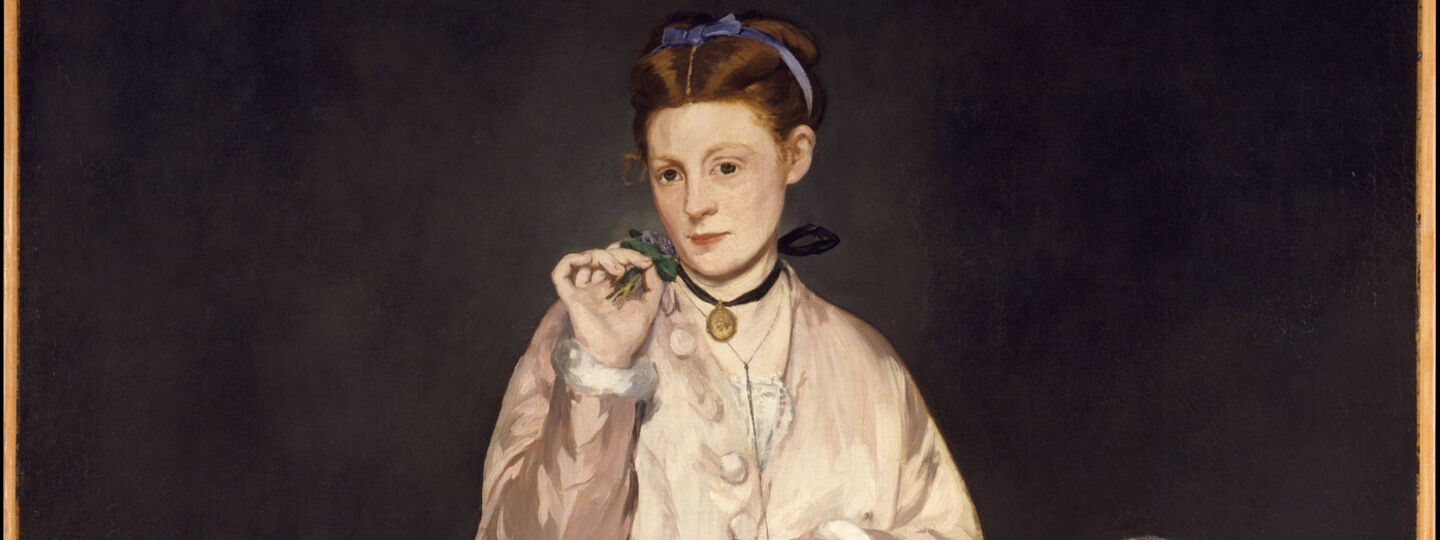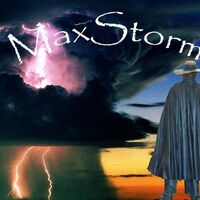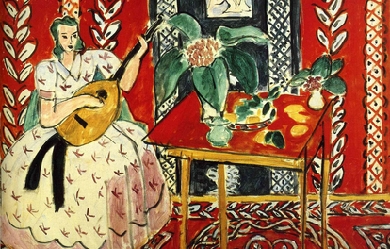.jpeg)
Vicente Gerbasi (Canoabo, Carabobo); 2 de junio de 1913 - Caracas, Venezuela; 28 de diciembre de 1992) fue escritor, poeta, político y diplomático venezolano, considerado el poeta contemporáneo venezolano más representativo y uno de los más brillantes exponentes de la lírica vanguardista, además de ser de los escritores más influyentes del siglo XX en Venezuela, así como de los más reconocidos. Miembro del Grupo Viernes, uno de los más notorias sociedades poéticas de Venezuela, Gerbasi no sólo lograría convertirse en su máximo exponente, sino que además se desenvolvería en una extraordinaria carrera política y diplomático, siendo miembro fundador del Partido Democrático Nacional junto con Rómulo Betancourt, Agregado Cultural de la embajada Venezolana en Bogotá, Cónsul de Venezuela en la Habana y Ginebra, Consejero Cultural de la Embajada Venezolana en Chile y Embajador de Venezuela en Haití, Israel, Dinamarca, Noruega y Polonia. Biografía Vicente Gerbasi nació el 2 de junio de 1913 en Canoabo, pequeña población del estado Carabobo, en Venezuela; hijo de los inmigrantes italianos Juan Bautista Gerbazi y Ana María Federico Pifano, quienes se habían establecido en esa región venezolana. Realizó estudios primarios y secundarios en Italia. En 1937 funda el Grupo "Viernes",conjuntamente con los poetas Pascual Venegas Filardo, Luis Fernando Alvarez, José Ramón Heredia, Oscar Rojas Jiménez, Ángel Miguel Queremel, Otto de Sola y el crítico Fernando Cabrices. Ese mismo año publica su primer libro de poesías, Vigilia del Náufrago. En 1968, Gerbasi gana el Premio Nacional de Literatura. Se desempeñó como diplomático en Colombia, donde comenzó su carrera diplomática en 1946 como Agregado Cultura luego en Cuba, Suiza y Chile. En 1959 fue designado Embajador en Haití, posteriormente en Israel (1960), luego en Dinamarca y Noruega (1964)y en Polonia (1969). Vicente Gerbasi es considerado el autor más representativo de la poesía venezolana contemporánea. En su libro de ensayos "Creación y Símbolo", el propio Gerbasi ha expresado: "En poesía las palabras no poseen un valor justo,filológico,etimológico,sino que adquieren un valor múltiple,que escapa a la lógica corriente del lenguaje". Existe en la escritura de Gerbazi una intensa investigación del lenguaje para inquirir en las peculiaridades entrañables del país. Su propósito consiste en señalar una posible identidad, pero sin fijarla en esquemas inflexibles, sino destacando sus connotaciones mágicas y su cosmogonía poética, entonces su lenguaje se hace necesario y eficaz para nombrar ese universo. En "Poema de la noche" de 1943, Gerbasi muestra estados subjetivos que alcanzan a objetivarse y concretarse en hechos reales o fenómenos naturales: "¡Haz grande mi tristeza,/misterio de la noche!/Que pase como un viento/por las sombras del campo/coronando los montes/de nieblas solitarias/tañendo en las aldeas/arpas de eternidad". Es la subjetivación que se concreta en el mundo real: "En la hierba tostada por el día, el sueño del caballo/nos rodea de flores,como el dibujo de un niño". En 1945 Gerbasi publica su libro más esencial y conocido: Mi padre el inmigrante. Se trata de un extenso poema integrado por treinta cantos basados en un mismo hilo temático: La figura mítica del padre a través de la cual opera la emoción frente al paisaje. Mi padre el inmigrante plantea enigmas metafísicos, recrea supersticiones, climas, espantos, mitos, leyendas, costumbres rurales, toda una flora y fauna fascinante y mágica. Gerbasi ha sido traducido al francés, al inglés, al italiano,al portugués, al danés, al sueco, al rumano al hebreo, al árabe y al chino. Falleció el 28 de diciembre de 1992. Obras * Vigilia del náufrago, 1937 * Bosque doliente, 1940 * Liras, 1943 * Poemas de la noche y de la tierra, 1943 * Mi padre, el inmigrante, 1945 * Tres nocturnos, 1947 * Poemas, 1947 * Los espacios cálidos, 1952 * Círculos del trueno, 1953 * La rama del relámpago, 1953 * Tirano de sombra y fuego, 1955 * Por arte del sol, 1958 * Olivos de eternidad, 1961 * Retumba como un sótano del cielo, 1977 * Edades perdidas, 1981 * Un día muy distante, 1987 * El solitario viento de las hojas, 1990 * Iniciación a la intemperie, 1990 Referencias http://es.wikipedia.org/wiki/Vicente_Gerbasi
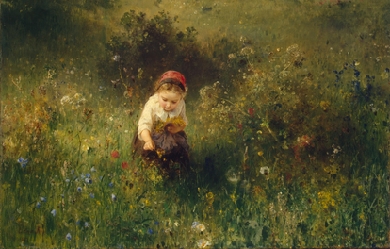
Mediante mi arte busco una conexión divina que me ate, en consecuencia, a no tener miedo en caída. Me llamo Manuel, actualmente tengo 21 años, vivo en Colombia y soy un amante de la vida. Soy un enloquecido fascinado con la espléndida obra del universo. El arte en general es un canal para drenar todo lo que siento y pienso, lo que me enseña el alma del mundo y aquellas señales en el lenguaje del universo.
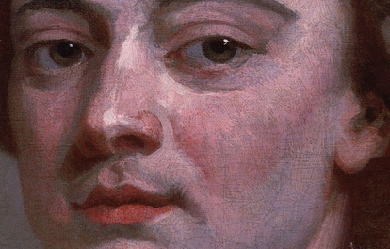

John Gay (/ɡeɪ/; 30 June 1685– 4 December 1732) was an English poet and dramatist and member of the Scriblerus Club. He is best remembered for The Beggar’s Opera (1728), a ballad opera. The characters, including Captain Macheath and Polly Peachum, became household names. Early life Gay was born in Barnstaple, England, and was educated at the town’s grammar school. On leaving school he was apprenticed to a silk mercer in London, but being weary, according to Samuel Johnson, “of either the restraint or the servility of his occupation”, he soon returned to Barnstaple, where he was educated by his uncle, the Rev. John Hanmer, the Nonconformist minister of the town. He then returned to London. Early career The dedication of his Rural Sports (1713) to Alexander Pope was the beginning of a lasting friendship. In 1714, Gay wrote The Shepherd’s Week, a series of six pastorals drawn from English rustic life. Pope had urged him to undertake this task in order to ridicule the Arcadian pastorals of Ambrose Philips, who had been praised by a short-lived contemporary publication The Guardian, to the neglect of Pope’s claims as the first pastoral writer of the age and the true English Theocritus. Gay’s pastorals achieved this goal and his ludicrous pictures of the English country lads and their loves were found to be entertaining on their own account. Gay had just been appointed secretary to the British ambassador to the court of Hanover through the influence of Jonathan Swift when the death of Anne, Queen of Great Britain, three months later put an end to all his hopes of official employment. In 1715, probably with some help from Pope, he produced What d’ye call it?, a dramatic skit on contemporary tragedy, with special reference to Thomas Otway’s Venice Preserv’d. It left the public so ignorant of its real meaning that Lewis Theobald and Benjamin Griffin published a Complete Key to what d’ye call it to explain it. In 1716 appeared his Trivia, or the Art of Walking the Streets of London, a poem in three books, for which he acknowledged having received several hints from Swift. It contains graphic and humorous descriptions of the London of that period. What is most interesting about the poem, however, is not the fact that it depicts the city with photographic accuracy, but that it acts as a guide to the upper, and upper-middle class walkers of society. In taking a mock-heroic form, Gay’s poem was able to poke fun at the notion of complete reformation of street civility, while also proposing an idea of reform in terms of the attitude towards walking. In January 1717 he produced the comedy, Three Hours After Marriage, which was thought to be grossly indecent (without being amusing) and a failure. He had assistance from Pope and John Arbuthnot, but they allowed it to be assumed that Gay was the sole author. Patrons Gay had numerous patrons, and in 1720 he published Poems on Several Occasions by subscription, taking in £1000 or more. In that year James Craggs, the secretary of state, presented him with some South Sea stock. Gay, disregarding the advice of Pope and others of his friends, invested all his money in South Sea stock, and, holding on to the end of the South Sea Bubble, he lost everything. The shock is said to have made him dangerously ill. His friends did not fail him at this juncture. He had patrons in William Pulteney, afterwards Earl of Bath, in the third Earl of Burlington, who constantly entertained him at Chiswick or at Burlington House, and in the third Duke of Queensberry. He was a frequent visitor with Pope, and received unvarying kindness from William Congreve and John Arbuthnot. In 1727 he wrote for six-year-old Prince William, later the Duke of Cumberland, Fifty-one Fables in Verse, for which he naturally hoped to gain some preferment, although he has much to say in them of the servility of courtiers and the vanity of court honours. He was offered the situation of gentleman-usher to the Princess Louisa, who was also still a child. He refused this offer, which all his friends seem to have regarded as an indignity. He had never rendered any special services to the court. The Beggar’s Opera He certainly did nothing to conciliate the favour of the government by his next work, The Beggar’s Opera, a ballad opera produced on the 29 January 1728 by John Rich, in which Sir Robert Walpole was caricatured. This famous piece, which was said to have made “Rich gay and Gay rich”, was an innovation in many respects. The satire of the play has a double allegory. The characters of Peachum and Macheath represent the famous highwayman and gangster Jonathan Wild and the cockney housebreaker Jack Sheppard. At the same time, Macheath was understood to represent Robert Walpole, whose government had been tolerant of Wild’s thievery and the South Sea directors’ escape from punishment. Under cover of the thieves and highwaymen who figured in it was disguised a satire on society, for Gay made it plain that in describing the moral code of his characters he had in mind the corruptions of the governing class. Part of the success of The Beggar’s Opera may have been due to the acting of Lavinia Fenton, afterwards Duchess of Bolton, in the part of Polly Peachum. The play ran for sixty-two nights. Swift is said to have suggested the subject, and Pope and Arbuthnot were constantly consulted while the work was in progress, but Gay must be regarded as the sole author. After seeing an early version of the work, Swift was optimistic of its commercial prospects but famously warned Gay to be cautious with his earnings: “I beg you will be thrifty and learn to value a shilling.” Later career He wrote a sequel, Polly, relating the adventures of Polly Peachum in the West Indies; its production was forbidden by the Lord Chamberlain, no doubt through the influence of Walpole. This act of “oppression” caused no loss to Gay. It proved an excellent advertisement for Polly, which was published by subscription in 1729, and brought its author several thousand pounds. The Duchess of Queensberry was dismissed from court for enlisting subscribers in the palace. The Duke of Queensberry gave Gay a home, and the duchess continued her affectionate patronage until Gay’s death in London on 4 December 1732. He was buried in Westminster Abbey. The epitaph on his tomb is by Pope, and is followed by Gay’s own mocking couplet: Works * Among Gay’s works are: * Wine– 1708 * The Present State of Wit– 1711 * The Rural Sports– 1713 * The Shepherd’s Week– 1714 * The What D’ye Call It– 1715 * Trivia, or The Art of Walking the Streets of London– 1716 * Acis and Galatea– 1718 * Poems on Several Occasions– 1720 * Fables (also known as Fifty-one Fables in Verse or Fables of John Gay)– 1727 (Part the Second– 1738) * The Beggar’s Opera– 1728 * Polly– 1729 * Achilles– 1733 * The Distress’d Wife– 1743 * Three Hours After Marriage– 1717 References Wikipedia—https://en.wikipedia.org/wiki/John_Gay
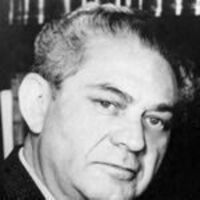
Ricardo López Méndez (El Vate). Poeta, escritor, periodista, locutor y publicista mexicano. Nacido en Izamal, Yucatán, México en 1903. Muerto en Cuernavaca, Morelos, México, en 1989. Hijo de Juan López Pacheco y de Francisca Méndez Palma. Juventud Hizo sus primeros cursos en su lugar natal, Izamal, en la escuela "Perseverancia" del reconocido educador Tiburcio Mena Osorio, para más tarde irse a vivir a Mérida, la capital del estado de Yucatán, en donde estudió, primero, en el Instituto Literario y después, en la Escuela Modelo. Desde muy joven destacó por su talento literario, habiendo pertenecido en la década de los 20 al grupo Esfinge, integrado por los literatos yucatecos José Esquivel Pren, Filiberto Burgos Jiménez, Oswaldo Baqueiro Anduze, Alberto Bolio Ávila, José Salomón Osorio, Clemente López Trujillo, Luis Augusto Rosado, Ernesto Albertos y Ramón Mendoza Medina. Fue también coetáneo, paisano izamaleño y sostuvo perdurable amistad con Miguel Ángel Menéndez Reyes, premio nacional de literatura (México) en 1940 El Poema de las Alas, declamado públicamente en 1925 en una reunión del mencionado grupo fue la primera obra que proyectó a López Méndez en su medio local. En ese entonces el Estado de Yucatán se encontraba en caótica situación política después del fusilamiento en 1924 del líder socialista y ex-gobernador del estado Felipe Carrillo Puerto, con quién El Vate se había vinculado desde 1920, y de quien recibiera el nombramiento de Director de la Biblioteca Zamná del Partido Socialista del Sureste. López Méndez había acompañado al prócer Carrillo Puerto en su último viaje al oriente de Yucatán, después del cual fue fusilado. El Vate Se llama Vate al poeta que vaticina el devenir y canta la memoria de su pueblo. López Méndez recibió este apelativo que llevó con orgullo a lo largo de su vida literaria, en honor a su genio creativo y al profundo arraigo de su obra en la sensibilidad del pueblo mexicano que lo hizo su cantor por excelencia a partir de la que tal vez fue su poesía cumbre: El Credo (México creo en ti..) México creo en ti Fue esta poesía la que despertó el reconocimiento hacia su autor en 1940, cuando fue publicada. Por ella, otro poeta yucateco, Antonio Mediz Bolio, otorga la dignidad de "El Vate" a López Méndez aduciendo que nadie había captado con más intensidad y cercanía "el maravilloso misterio" de la patria mexicana. Es este poema también el que hace decir a Don Alfonso Reyes: "en ella (en la poesía), la voz de López Méndez se convierte en voz de su pueblo y ejerce así su más alta función". Dice así el primer verso del poema: México, creo en ti, como en el vértice de un juramento, Tú hueles a tragedia tierra mía, y sin embargo ríes demasiado, acaso porque sabes que la risa, es la envoltura de un dolor callado... Poesía musicalizada El primer poema suyo hecho canción, en 1925, Languidece una estrellita, fue musicalizado por Ricardo Palmerín. De ahí, "El Vate" se proyectó como inspirado poeta cuya obra habría de recorrer el mundo entero envuelta en la música de los mejores compositores de la época y cantadas por los más afamados intérpretes del momento. Canciones como Nunca, Golondrina Viajera, Quisiera y Aléjate, con música de un inmortal de la trova yucateca, Guty Cárdenas, han dado la vuelta al orbe y siguen, después de más de setenta años de haber sido compuestas, siendo cantadas y grabadas por los más afamados intérpretes como Julio Iglesias y Plácido Domingo. ¿Quién no ha escuchado en el mundo de habla hispana la melodía y la letra inolvidables de Nunca?: Yo sé que nunca besaré tu boca, tu boca de púrpura encendida; yo sé que nunca llegaré a la loca y apasionada fuente de tu vida. Yo sé que inútilmente te venero e inútilmente el corazón te evoca; pero a pesar de todo yo te quiero; pero a pesar de todo yo te quiero aunque nunca besar pueda tu boca. Fueron 150 los poemas de Ricardo López Méndez que se musicalizaron para volverse canciones y que siguen habitando en el corazón musical de México y de muchas otras partes. Además de los ya mencionados compositores, otros famosos pusieron música a la letra de "El Vate": Alfonso Esparza Oteo, clásico del Vals mexicano, Íntimo Secreto; Tata Nacho (Ignacio Fernández Esperón), que dio a la soprano Ernestina Garfias Primaveral para su interpretación en el Palacio de Bellas Artes, de la capital de la república mexicana; Mario Talavera, Amar en Silencio; Gabriel Ruiz Galindo responsable de haber musicalizado 38 poemas de López Méndez, entre los cuales Amor, amor y Desesperadamente; Gonzalo Curiel Barba, (Tu Partida); hasta el propio Agustín Lara con Puerto Nuevo y Callecita, entre otros muchos conocidos compositores. Otros versos Otros versos de Ricardo López Méndez que no fueron transportados al pautado alcanzaron fama plena. Destacan además del Credo, Voz en la Piedra (1942), dedicado a Yucatán con motivo del 4º Centenario de la fundación de la Ciudad capital del Estado, Mérida, y cuya edición fue prologada por Antonio Mediz Bolio; Poema en tu cuerpo (1949); Aquí estamos y Morelos. De Voz en la Piedra se recoge, como muestra del estilo del autor, uno de los versos referido a la fundación de la Ciudad de Mérida, la de Yucatán: Hace ya cuatro siglos, los graves sacerdotes de los mayas miraron con asombro, cómo sobre los templos de sus dioses el puño de la espada castellana crucificaba el corazón del viento... Prosa No sólo en la poesía alcanzó renombre López Méndez. Su prosa también mereció elogio del público y de la crítica literaria: Estampas de la Historia de México, La imprenta en Yucatán, Lope de Vega y José María Vigil, son algunos de los libros que salieron de la pluma de este autor. Como periodista colaboró en varios de los más importantes periódicos de Yucatán y de la Ciudad de México: El Diario de Yucatán, El Universal Gráfico, Excelsior, Novedades, El Nacional, acogieron por más de cuarenta años sus artículos. Publicista y locutor Se desempeñó como locutor y publicista destacando su colaboración en la XEW desde la fundación de esa radiodifusora en donde ejerció usando su abaritonada voz junto a la de otros famosos como Pedro de Lille, su paisano Humberto G. Tamayp y Manuel Bernal, gran declamador de México, cuya interpretación del Credo se hizo famosa. Ricardo López Méndez incursionó exitosamente como empresario en la radiodifusión, habiendo fundado y dirigido varias estaciones transmisoras en el territorio mexicano, desde Tamaulipas hasta Yucatán y Quintana Roo. Reconocimientos * Monumento en honor del Vate López Méndez, en Cordemex, Mérida, Yucatán, México * Fue Presidente de la Sociedad de Autores y Compositores de México. * Presea el Monje de Oro de Rubén Darío en la República de Nicaragua * Medalla Yucatán (1967) * Medalla Eligio Ancona (1985) * Medalla Guty Cárdenas (1976) otorgada por el Ayuntamiento de Mérida. * Hijo Predilecto en varias entidades federativas de México. * Es frecuente encontrar su busto en bronce, señal de homenaje público, en parques y *jardines de la Ciudad de México, Yucatán y otros estados de México. * Desde principios del 2009 hay una calle que lleva su nombre en el norte de la ciudad de Mérida, Yucatán aledaña al Centro Cultural Obrero que también ha sido nombrado en su homenaje. Esta calle discurre desde la glorieta, frente al Centro de Convenciones Siglo XXI, hasta la Escuela Normal Rodolfo Menéndez de la Peña. Referencias Wikipedia - http://es.wikipedia.org/wiki/Ricardo_López_Méndez
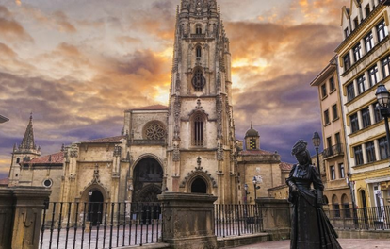
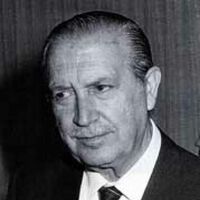
José García Nieto (Oviedo, 6 de julio de 1914 – Madrid, 27 de febrero de 2001), poeta y escritor español, ganador del Premio Cervantes y miembro, junto a Gabriel Celaya, Blas de Otero y José Hierro, de la generación poética de la posguerra española. José García Nieto, nace en Oviedo, el 6 de julio de 1914, en el nº 8 de la calle Portugalete (hoy Melquíades Álvarez nº 6). Sus padres fueron don José García Lueso y doña María de La Encarnación Nieto Fernández. El padre, que tenía la carrera de derecho, se dedicó al periodismo. Queda huérfano de padre a los 9 años y con su madre vive en Zaragoza, Toledo y Madrid, donde estudia el bachillerato y comienza a hacer versos. Al comenzar la Guerra Civil española (1936-1939), ocupa el puesto de secretario del Ayuntamiento de Chamartín de la Rosa (que luego sería absorbido por el Ayuntamiento de Madrid), es movilizado y al terminar la guerra vuelve al Ayuntamiento. Desde entonces se dedica a la literatura, especialmente a la poesía, al teatro, incluyendo la adaptación de clásicos españoles y al guion cinematográfico. En 1950 obtiene el Premio Adonais por Dama de soledad. Obtiene el Premio Fastenrath de la Real Academia Española por Geografía es amor en 1955. En 1951 y 1957 obtiene el Premio Nacional de Literatura. En 1980 obtiene el Premio Mariano de Cavia de periodismo. Es elegido académico de la Real Academia Española el 28 de enero de 1982, ocupando el sillón "i" que dejó vacante José María Pemán. En 1987 obtiene el Premio González-Ruano de periodismo.ç En 1996 le conceden el Premio Cervantes por el conjunto de su obra. Obra * Víspera hacia ti (1940) * Poesía (1944) * Versos de un huésped de Luisa Esteban (1944) * Tú y yo sobre la tierra (1944) * Retablo de ángel, el hombre y la pastora (1944) * Del campo y soledad (1946) * Juego de los doce espejos (1951) * Tregua (1951). Premio Nacional de Literatura * La red (1955). Premio Fastenrath * Geografía es amor (1956). Premio Nacional de Literatura * El parque pequeño (1959) * Corpus Chisti y seis sonetos (1962) * Circunstancias de la muerte (1963) * La hora undécima (1963) * Memorias y compromisos (1966) * Hablando solo (1967). Premio Ciudad de Barcelona * Facultad de volver (1970) * Taller de arte menor y cincuenta sonetos (1973) * Súplica por la paz del mundo y otros "collages" (1973). Premio Boscán * Sonetos y revelaciones de Madrid (1974) * Los cristales fingidos (1978) * El arrabal (1980) * Nuevo elogio de la lengua española (1983) * Sonetos españoles a Bolívar (1983) * Donde el mundo no cesa de referir su historia (1983) -prosa- * Piedra y cielo de Roma (1984) * Carta a la madre (1988) * Mar viviente (1989) * El cuaderno roto (1989) -prosa- Referencias Wikipedia-http://es.wikipedia.org/wiki/José_García_Nieto
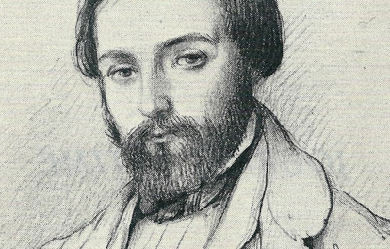
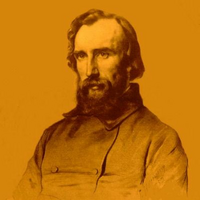
Henri-Frédéric Amiel (né le 27 septembre 1821 à Genève – mort le 11 mai 1881 dans la même ville) est un écrivain et philosophe suisse, auteur d'un journal intime exceptionnel tant par son volume (17 000 pages) que par la valeur et l'universalité de son message. Biographie Il est le premier fils d'Henri Amiel et de Caroline Brandt. Deux tragédies familiales marquent son enfance : la mort de sa mère (d'une tuberculose), alors qu'il n'a que onze ans, et, moins de deux ans plus tard, le suicide de son père, qui se jette dans le Rhône. Henri-Frédéric, alors âgé, de 13 ans, et ses deux sœurs cadettes, Fanny et Laure, sont recueillis par leur oncle Frédéric Amiel et leur tante Fanchette, déjà parents de onze enfants. Ce séjour dure sept ans. Après avoir commencé ses études dans sa ville natale, Henri-Frédéric voyage en Suisse, en Italie, en France et en Belgique. En Allemagne, il s'arrête d'abord pendant neuf mois à Heidelberg. Puis, de 1844 à 1848, à Berlin, il étudie la philosophie (avec Schelling), la psychologie (avec Friedrich Eduard Beneke), la philologie et la théologie. Il fut l'un des premiers étrangers à s'intéresser à la philosophie de Schopenhauer, qu'il présenta à ses étudiants en 1866 déjà, mais son éducation et son caractère l'empêchèrent d'y adhérer, en lui faisant préférer celle de Krause. En 1849, il revient à Genève et devient professeur d’esthétique et de littérature française, à l'université de Genève, grâce à son étude Du mouvement littéraire dans la Suisse romande et de son avenir. De 1854 jusqu'à sa mort, il conserve sa chaire de philosophie. Il introduit dans la langue française et anglaise, aux alentours de 1860, le terme d’inconscient, au sens de ce qui est non conscient. Les références Wikipedia – https://fr.wikipedia.org/wiki/Henri-Frédéric_Amiel

I'm honestly, not a good poet. In fact, I hate writing poetry because my poetry is the absolutely horrible in my eyes but in others, its good. I post my poetry, not to get positive feedback or useful criticism but I post it to share my feelings and have a sense of release in my life. I bottle a lot of my feelings up and sometimes, I get inspiration to write a poem but even when i write a poem, it doesn't feel right. I like sharing my poetry so people can get an insight of my feelings inside and see the stuff, I've went through or am currently going through. Again I am not looking for criticism or really any praise. If you do like my poetry, well then I'm glad. It's usually a shock to me that anyone would take a liking to my poetry and if you don't like my poetry, well then that's something we can both agree on right? ;) ABOUT ME: I live in Charlotte,NC. I am 18 years old. I've been writing poetry ever since my mom died which was 5 years ago.
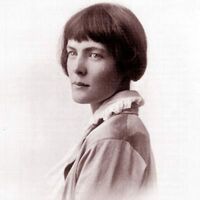
About H.D's Life and Career—An Essay by Bonnie Kime Scott Having rejected Victorian norms for modern experiments, H. D. repeatedly launched out from instructors found among the early canonized male modernists. She developed new lyric, mythic, and mystical forms in poetry and prose, and an alternative bisexual lifestyle that were little appreciated until the 1980s. Her literary contacts included Ezra Pound, Marianne Moore, William Carlos Williams, Ford Madox Ford, May Sinclair, Dorothy Richardson, Richard Aldington, Bryher, D. H. Lawrence, T. S. Eliot, Djuna Barnes, Gertrude Stein, Amy Lowell, Norman Douglas, Edith Sitwell, and Elizabeth Bowen. She was the literary editor of the Egoist (1916-1917), and admired the work of James Joyce and Virginia Woolf. Younger poets like Robert Duncan, Allen Ginsberg, May Sarton, and Denise Levertov took her as a mentor. H. D.'s literary papers are at Beinecke Library, Yale University. Autobiographies H. D. was born into the Moravian community of her artistic, musical mother, Helen (Wolle), in Bethlehem, Pennsylvania, and reared in Upper Darby, a Philadelphia suburb convenient to the University of Pennsylvania. Her astronomer father, Charles, was director of the Flower Observatory there. The Gift (written 1941-1944; published 1982) is cast in the inquiring voice of a child, who is cognizant of several generations of her family, and of her own dreams and fantasies. Her grandmother ultimately bestows a sense of her self-enabling heritage or "gift," and its mystical connection to the Moravians. Mystical access to the past through visions and the reading of "signets"--signs or heiroglyphs requiring patient deciphering--is essential to all of H. D.'s autobiographical writing. H.D.'s autobiographical writings from the middle years of her life are invaluable to the study of the gendered politics of experimental modernism, and the place of the female analysand in psychoanalysis. Ezra Pound entered her life while she was still a schoolgirl in Pennsylvania. In verses written for her, Pound gave her the persona of the "dryad," which persisted among her many self-concepts. They were twice engaged. Barbara Guest has suggested that his tutelage interfered with her studies at Bryn Mawr, which she quit in her second year. She did meet another as yet undeclared poet, Marianne Moore, while there (1904-1906). H. D. joined the same literary circles Pound traveled in when she moved to London in 1911. In a famous incident of 1913, he sent some of her verse to Harriet Monroe's Poetry Magazine, appending the signature "H.D., Imagiste." They served as models of the new poetry he was promoting. End to Torment: A Memoir of Ezra Pound by H. D. (written 1958; published 1979) explores this relationship. With Bid Me to Live (written 1933-1950, published 1960), H. D. writes herself out of what Rachel Blau DuPlessis has called "romantic thralldom" with two other literary men. She married the British poet, Richard Aldington, in 1913. Having enlisted in World War I, his fictional counterpart called for her sustaining letters to the front, yet resented her sharing verses with "Rico," the D. H. Lawrence counterpart, and flaunted his infidelities. Lawrence had a charismatic effect upon H. D. during the war years in London, but discouraged her creation of male subjects in her poetry, and objected to her relationship with Cecil Grey, the painter whom she joined in Cornwall. Grey became the father of her only surviving child, Frances Perdita Aldington (born 1919). H. D. had been anguished over the still-birth of a daughter fathered by Aldington in 1915, and the death of her brother Gilbert at the front. Bid Me to Live was part of a "madrigal cycle," including also Paint it To-Day and Asphodel (neither yet fully published). All of these works intertwined the painful demands of war and love relationships, as does the brilliant long poem, Trilogy (written 1944-1946), with its images of rebirth taken from classical, Egyptian and Christian sources. Tribute to Freud (written 1944; published gradually from 1945-1985) offers a third creative re-vision of male-inspired paradigms. H. D. was analyzed by Freud in 1933 and 1934, in an attempt to overcome writer's block. She also underwent analysis with Hans Sachs in the 1930s, with Erich Heydt in the 1950s, and was treated with intervenous shock therapy, following a major breakdown in 1946. Freud encouraged her to write straight history to breakout of the personal crisis she experienced during World War I. With Bid Me to Live she felt she was escaping also from the influence of psychoanalysis; she did revise Freud's role as analyst to something more like a medium. Spiritualism became an overriding interest in the 1940s. Communication with the dead and projections from another realm were regular tropes in her writing, including her last writing, Hermetic Definition. Bisexuality H.D.'s troubled alliance with Pound was mingled with her love of Frances Josepha Gregg, a student at the Pennsylvania Academy of Fine Arts, and the recipient of some of her earliest poems. Gregg and her mother were H. D.'s companions on the 1911 trip to London. Prefiguring other bisexual triangles she would involve herself in, H. D. planned to accompany Gregg on her honeymoon, but was prevented from doing so by Pound. The strains between lesbian and heterosexual attractions, experienced over the Gregg relationship, entered into H. D.'s novel HERmione (written 1927, the year before Radclyffe Hall's lesbian novel, The Well of Loneliness, was the subject of an obscenity trial; published 1981). The novelist and editor Bryher (Winnifred Ellerman, an heiress to a shipping fortune), was the most significant companion of her mature life. Their relationship survived until H. D.'s death in 1961, spanning Bryher's two marriages of convenience to Robert McAlmon and Kenneth Macpherson, in circumstances that included significant travel and residences mainly in London and Switzerland. H. D. has credited Bryher with saving her life during the final months of her pregnancy in 1919, when she was struck with influenza. Bryher and H. D. traveled to the Scilly Islands together in June 1919, for a month of idyllic companionship; they went to Greece (sailing by Lesbos) with H. D.'s mother in 1922, and traveled to Egypt the next year. The women made a creative trio with the artist and filmmaker Kenneth Macpherson from 1927 to 1932; Macpherson became H. D.'s lover, and Bryher's husband, and the married couple adopted H. D.'s daughter Perdita. Their collaborations included photomontages, the film journal Close Up, to which H. D. supplied poetry and reviews, and Borderline, a film in which H. D. starred with Paul Robeson. The project is one indication of H. D.'s literary connections to the Harlem Renaissance, and her attraction to the margins of modernism. Much of H.D.'s poetry published in the 1930s and 1940s appeared in Life and Letters Today, edited by Bryher. H.D. was well informed about contemporary theories of homosexuality, due both to her analysis by Freud, who pronounced her bisexual, and her friendship with sexologist Havelock Ellis, whom she met in 1919. But she was not limited to their views, particularly in HER. Her shift in interest to mother-daughter dynamics in Notes on Thought and Vision may have been a transference out of Freud's influence. However, Ellis failed to appreciate her revolutionary "bell jar" experiences of pregnancy and the unconscious, recorded in Notes on Thought and Vision, and his lack of enthusiasm may have discouraged her publishing it. Critical Repositioning and Feminist Criticism For many years H. D. was known chiefly for the stark, chiseled images and experimental rhythms of her earliest work, collected as Sea Garden (1916). This fit the imagist program of Ezra Pound. She also had a limited reputation as a classicist and translator of Greek. Feminist critics, led by Susan Stanford Friedman and Rachel Blau DuPlessis, have studied H.D.'s works for feminine lesbian, and bisexual discourses. Since the early 1980s H. D.'s epic and prose writing have received more attention, and work self-suppressed in her own lifetime has been recovered and studied. H. D.'s frequent recourse to the palimpsest can be seen as an escape from binary and hierarchical thinking associated with patriarchy. The term denotes a parchment that retains partially erased parts of earlier writings, which strain productively with new text. She titled a three-part story sequence Palimpsest (written 1923-1924), but the term also applies to her rewritings of her own selfhood in autobiographies, and to her rewritten myths. H. D. can be credited with anticipating the maternal semiotic of Julia Kristeva, and with giving a female voice to classical myths. Sandra Gilbert ("H. D.? Who Was She?," Contemporary Literature 24 [1983]: 496-511) suggests that she developed a "woman's mythology" in Trilogy, Helen in Egypt, and Hermetic Definition. Alicia Ostriker ("Thieves of Language," Signs 8, no. 1 [1982]: 68-90) includes H. D. among women poets who construct new myths to include their selves. H. D.'s Greek texts, culminating in Helen in Egypt, explore the divinity of the goddess, the sexually ecstatic Eleusinian mysteries, and the female version of patriarchal epics. A criticism from Lawrence S. Rainey ("Canon, Gender and Text," Representing Modern Texts, ed. George Bornstein, [1991]) is that in recent years H. D.'s work has been studied for the sake of content conducive to feminist solidarity, rather than aesthetic value. Yet this criticism neglects feminist critics' remarks on the formal devices of mythic mask, palimpsest, and return of the repressed, characteristic of life-writing cure, that moved H. D. beyond confinement to the divisive gender stereotypes of her day.

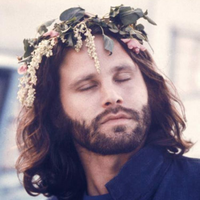
James Douglas “Jim” Morrison (December 8, 1943– July 3, 1971) was an American singer, songwriter, and poet, best remembered as the lead singer of The Doors. As a result of his lyrics, wild personality, performances, and the dramatic circumstances surrounding his life and death, Morrison is regarded by critics and fans as one of the most iconic and influential frontmen in rock music history. In the later part of the 20th century, his fame endured as one of the popular culture’s most rebellious and oft-displayed icons, representing the generation gap and youth counterculture. He was also well known for improvising spoken word poetry passages while the band played live. Morrison was ranked number 47 on Rolling Stone’s list of the "100 Greatest Singers of All Time", and number 22 on Classic Rock magazine’s "50 Greatest Singers In Rock". Ray Manzarek, who co-founded the Doors with him, said Morrison “embodied hippie counterculture rebellion”. Morrison was sometimes referred to by other nicknames, such as “Lizard King” and “King of Orgasmic Rock”. Morrison developed an alcohol dependency during the 1960s, which at times affected his performances on stage. He died at the age of 27 in Paris, possibly from an accidental heroin overdose. As no autopsy was performed, the exact cause of Morrison’s death is still disputed. Morrison is interred at Père Lachaise Cemetery in eastern Paris. Early years James Douglas Morrison was born in Melbourne, Florida, the son of Clara Virginia (née Clarke) and Rear Admiral George Stephen Morrison, USN, who commanded US naval forces during the Gulf of Tonkin incident, which provided the pretext for the US invasion of South Vietnam in 1965. Morrison had a sister, Anne Robin, who was born in 1947 in Albuquerque, New Mexico; and a brother, Andrew Lee Morrison, who was born in 1948 in Los Altos, California. His ancestors were Scottish, Irish, and English. In 1947, Morrison, then four years old, allegedly witnessed a car accident in the desert, in which a family of Native Americans were injured and possibly killed. He referred to this incident in the Doors’ song “Peace Frog” on the 1970 album Morrison Hotel, as well as in the spoken word performances “Dawn’s Highway” and “Ghost Song” on the posthumous 1978 album An American Prayer. Morrison believed this incident to be the most formative event of his life, and made repeated references to it in the imagery in his songs, poems, and interviews. His family does not recall this incident happening in the way he told it. According to the Morrison biography No One Here Gets Out Alive, Morrison’s family did drive past a car accident on an Indian reservation when he was a child, and he was very upset by it. The book The Doors, written by the remaining members of the Doors, explains how different Morrison’s account of the incident was from that of his father. This book quotes his father as saying, "We went by several Indians. It did make an impression on him [the young James]. He always thought about that crying Indian." This is contrasted sharply with Morrison’s tale of “Indians scattered all over the highway, bleeding to death.” In the same book, his sister is quoted as saying, “He enjoyed telling that story and exaggerating it. He said he saw a dead Indian by the side of the road, and I don’t even know if that’s true.” Raised a military brat, Morrison’s family moved often. He spent part of his childhood in San Diego. He completed third grade at a Fairfax County Elementary School Fairfax County, Virginia. His father was stationed at NAS Kingsville in 1952, he attended Charles H. Flato Elementary School in Kingsville, Texas. He continued at St. John’s Methodist School in Albuquerque, New Mexico, and then Longfellow School Sixth Grade Graduation Program from San Diego, California. In 1957, Morrison attended Alameda High School in Alameda, California. He graduated from George Washington High School, now George Washington Middle School, in Alexandria, Virginia in June 1961. Cass Elliot also attended high school there, that same year. Morrison read widely and voraciously—being particularly inspired by the writings of philosophers and poets. He was influenced by Friedrich Nietzsche, whose views on aesthetics, morality, and the Apollonian and Dionysian duality would appear in his conversation, poetry and songs. He read Plutarch’s “Lives of the Noble Greeks and Romans”. He read the works of the French Symbolist poet Arthur Rimbaud, whose style would later influence the form of Morrison’s short prose poems. He was also influenced by William S. Burroughs, Jack Kerouac, Allen Ginsberg, Lawrence Ferlinghetti, Charles Baudelaire, Molière, Franz Kafka, Honoré de Balzac and Jean Cocteau, along with most of the French existentialist philosophers. His senior-year English teacher said, “Jim read as much and probably more than any student in class, but everything he read was so offbeat I had another teacher (who was going to the Library of Congress) check to see if the books Jim was reporting on actually existed. I suspected he was making them up, as they were English books on sixteenth– and seventeenth-century demonology. I’d never heard of them, but they existed, and I’m convinced from the paper he wrote that he read them, and the Library of Congress would’ve been the only source.” Morrison went to live with his paternal grandparents in Clearwater, Florida, where he attended classes at St. Petersburg College (then known as a junior college). In 1962, he transferred to Florida State University (FSU) in Tallahassee, where he appeared in a school recruitment film. While attending FSU, Morrison was arrested for a prank following a home football game. In January 1964, Morrison moved to Los Angeles to attend the University of California, Los Angeles (UCLA). Shortly thereafter on August 2, 1964, Morrison’s father, George Stephen Morrison, commanded a carrier division of the United States fleet during the Gulf of Tonkin Incident, which resulted in the United States’ rapid escalation of the Vietnam War. At UCLA, Morrison enrolled in Jack Hirschman’s class on Antonin Artaud in the Comparative Literature program within the UCLA English Department. Artaud’s brand of surrealist theatre had a profound impact on Morrison’s dark poetic sensibility of cinematic theatricality. Morrison completed his undergraduate degree at UCLA’s film school within the Theater Arts department of the College of Fine Arts in 1965. At the time of graduation ceremony, he went to Venice, and his diploma was mailed to his mother at Coronado. He made several short films while attending UCLA. First Love, the first of these films, made with Morrison’s classmate and roommate Max Schwartz, was released to the public when it appeared in a documentary about the film Obscura. During these years, while living in Venice Beach, he became friends with writers at the Los Angeles Free Press, for which he advocated until his death in 1971. He conducted a lengthy and in-depth interview with Bob Chorush and Andy Kent, both working for the Free Press at the time (approximately December 6–8, 1970), and was planning on visiting the headquarters of the busy newspaper shortly before leaving for Paris. The Doors In the summer of 1965, after graduating with a bachelor’s degree from the UCLA film school, Morrison led a bohemian lifestyle in Venice Beach. Living on the rooftop of a building inhabited by his old UCLA cinematography friend, Dennis Jakobs, he wrote the lyrics of many of the early songs the Doors would later perform live and record on albums, the most notable being “Moonlight Drive” and “Hello, I Love You”. According to Jakobs, he lived on canned beans and LSD for several months. Morrison and fellow UCLA student, Ray Manzarek, were the first two members of the Doors, forming the group during that summer. They had met months earlier as cinematography students. The now-legendary story claims that Manzarek was lying on the beach at Venice one day, where he accidentally encountered Morrison. He was impressed with Morrison’s poetic lyrics, claiming that they were “rock group” material. Subsequently, guitarist Robby Krieger and drummer John Densmore joined. Krieger auditioned at Densmore’s recommendation and was then added to the lineup. All three musicians shared a common interest in the Maharishi Mahesh Yogi’s meditation practices at the time, attending scheduled classes, but Morrison was not involved in this series of classes, claiming later that he “did not meditate.” The Doors took their name from the title of Aldous Huxley’s book The Doors of Perception (a reference to the unlocking of doors of perception through psychedelic drug use). Huxley’s own title was a quotation from William Blake’s The Marriage of Heaven and Hell, in which Blake wrote: “If the doors of perception were cleansed everything would appear to man as it is, infinite.” Although Morrison was known as the lyricist of the group, Krieger also made significant lyrical contributions, writing or co-writing some of the group’s biggest hits, including “Light My Fire”, “Love Me Two Times”, “Love Her Madly”, and “Touch Me”. On the other hand, Morrison, who didn’t write most songs using an instrument, would come up with vocal melodies for his own lyrics, with the other band members contributing chords and rhythm. Morrison did not play an instrument live (except for maracas and tambourine for most shows, and harmonica on a few occasions) or in the studio (excluding maracas, tambourine, handclaps, and whistling). However, he did play the grand piano on “Orange County Suite” and a Moog synthesizer on “Strange Days”. In June 1966, Morrison and the Doors were the opening act at the Whisky a Go Go in the last week of the residency of Van Morrison’s band Them. Van’s influence on Jim’s developing stage performance was later noted by John Densmore in his book Riders On The Storm: “Jim Morrison learned quickly from his near-namesake’s stagecraft, his apparent recklessness, his air of subdued menace, the way he would improvise poetry to a rock beat, even his habit of crouching down by the bass drum during instrumental breaks.” On the final night, the two Morrisons and their two bands jammed together on “Gloria”. In November 1966, Morrison and the Doors produced a promotional film for “Break on Through (To the Other Side)”, which was their first single release. The film featured the four members of the group playing the song on a darkened set with alternating views and close-ups of the performers while Morrison lip-synched the lyrics. Morrison and the Doors continued to make short music films, including “The Unknown Soldier”, “Moonlight Drive”, and “People Are Strange”. The Doors achieved national recognition after signing with Elektra Records in 1967. The single “Light My Fire” spent three weeks at number one on the Billboard Hot 100 chart in July/August 1967. This was a far cry from the Doors playing warm up for Simon and Garfunkel and playing at a high school as they did in Connecticut that same year. Later, the Doors appeared on The Ed Sullivan Show, a popular Sunday night variety series that had introduced the Beatles and Elvis Presley to the United States. Ed Sullivan requested two songs from the Doors for the show, “People Are Strange” and “Light My Fire”. Sullivan’s censors insisted that the Doors change the lyrics of the song “Light My Fire” from “Girl we couldn’t get much higher” to “Girl we couldn’t get much better” for the television viewers; this was reportedly due to what was perceived as a reference to drugs in the original lyrics. After giving assurances of compliance to the producer in the dressing room, the band agreed, “we’re not changing a word,” and proceeded to sing the song with the original lyrics. Sullivan was not happy and he refused to shake hands with Morrison or any other band member after their performance. Sullivan had a show producer tell the band that they would never appear on The Ed Sullivan Show again. Morrison reportedly said to the producer, in a defiant tone, “Hey man. We just 'did’ the Sullivan Show!” By the release of their second album, Strange Days, the Doors had become one of the most popular rock bands in the United States. Their blend of blues and dark psychedelic rock included a number of original songs and distinctive cover versions, such as their rendition of “Alabama Song”, from Bertolt Brecht and Kurt Weill’s opera, Rise and Fall of the City of Mahagonny. The band also performed a number of extended concept works, including the songs “The End”, “When the Music’s Over”, and “Celebration of the Lizard”. In 1966, photographer Joel Brodsky took a series of black-and-white photos of Morrison, in a photo shoot known as “The Young Lion” photo session. These photographs are considered among the most iconic images of Jim Morrison and are frequently used as covers for compilation albums, books, and other memorabilia of the Doors and Morrison. In late 1967 at an infamous concert in New Haven, Connecticut, he was arrested on stage, an incident that further added to his mystique and emphasized his rebellious image. In 1968, the Doors released their third studio album, Waiting for the Sun. The band performed on July 5 at the Hollywood Bowl, this performance became famous with the DVD: Live at the Hollywood Bowl. It’s also this year that the band played, for the first time, in Europe. Their fourth album, The Soft Parade, was released in 1969. It was the first album where the individual band members were given credit on the inner sleeve for the songs they had written. Previously, each song on their albums had been credited simply to “the Doors”. On September 6 and 7, 1968, the Doors played four performances at the Roundhouse, London, England with Jefferson Airplane which were filmed by Granada for a television documentary The Doors are Open directed by John Sheppard. Around this time, Morrison—who had long been a heavy drinker—started showing up for recording sessions visibly inebriated. He was also frequently late for live performances. By early 1969, the formerly svelte singer had gained weight, grown a beard and mustache, and had begun dressing more casually—abandoning the leather pants and concho belts for slacks, jeans and T-shirts. During a concert of March 1, 1969 at the Dinner Key Auditorium in Miami, Morrison attempted to spark a riot in the audience. He failed, but a warrant for his arrest was issued by the Dade County Police department three days later for indecent exposure. Consequently, many of the Doors’ scheduled concerts were canceled. In September 1970, Morrison was convicted of indecent exposure and profanity. Morrison, who attended the sentencing “in a wool jacket adorned with Indian designs”, silently listened as he was sentenced for six months in prison and had to pay a $500 fine. Morrison remained free on a $50,000 bond. At the sentencing, Judge Murray Goodman told Morrison that he was a “person graced with a talent” admired by many of his peers. In 2007 Florida Governor Charlie Crist suggested the possibility of a posthumous pardon for Morrison, which was announced as successful on December 9, 2010. Drummer John Densmore denied Morrison ever exposed himself on stage that night. Following The Soft Parade, the Doors released Morrison Hotel. After a lengthy break the group reconvened in October 1970 to record what would become their final album with Morrison, titled L.A. Woman. Shortly after the recording sessions for the album began, producer Paul A. Rothchild—who had overseen all of their previous recordings—left the project. Engineer Bruce Botnick took over as producer. Poetry and film Morrison began writing in earnest during his adolescence. At UCLA he studied the related fields of theater, film, and cinematography. He self-published two separate volumes of his poetry in 1969, titled The Lords / Notes on Vision and The New Creatures. The Lords consists primarily of brief descriptions of places, people, events and Morrison’s thoughts on cinema. The New Creatures verses are more poetic in structure, feel and appearance. These two books were later combined into a single volume titled The Lords and The New Creatures. These were the only writings published during Morrison’s lifetime. Morrison befriended Beat poet Michael McClure, who wrote the afterword for Danny Sugerman’s biography of Morrison, No One Here Gets Out Alive. McClure and Morrison reportedly collaborated on a number of unmade film projects, including a film version of McClure’s infamous play The Beard, in which Morrison would have played Billy the Kid. After his death, a further two volumes of Morrison’s poetry were published. The contents of the books were selected and arranged by Morrison’s friend, photographer Frank Lisciandro, and girlfriend Pamela Courson’s parents, who owned the rights to his poetry. The Lost Writings of Jim Morrison Volume I is titled Wilderness, and, upon its release in 1988, became an instant New York Times Bestseller. Volume II, The American Night, released in 1990, was also a success. Morrison recorded his own poetry in a professional sound studio on two separate occasions. The first was in March 1969 in Los Angeles and the second was on December 8, 1970. The latter recording session was attended by Morrison’s personal friends and included a variety of sketch pieces. Some of the segments from the 1969 session were issued on the bootleg album The Lost Paris Tapes and were later used as part of the Doors’ An American Prayer album, released in 1978. The album reached No. 54 on the music charts. Some poetry recorded from the December 1970 session remains unreleased to this day and is in the possession of the Courson family. Morrison’s best-known but seldom seen cinematic endeavor is HWY: An American Pastoral, a project he started in 1969. Morrison financed the venture and formed his own production company in order to maintain complete control of the project. Paul Ferrara, Frank Lisciandro and Babe Hill assisted with the project. Morrison played the main character, a hitchhiker turned killer/car thief. Morrison asked his friend, composer/pianist Fred Myrow, to select the soundtrack for the film. Personal life Morrison’s family Morrison’s early life was the semi-nomadic existence typical of military families. Jerry Hopkins recorded Morrison’s brother, Andy, explaining that his parents had determined never to use physical corporal punishment such as spanking on their children. They instead instilled discipline and levied punishment by the military tradition known as dressing down. This consisted of yelling at and berating the children until they were reduced to tears and acknowledged their failings. Once Morrison graduated from UCLA, he broke off most contact with his family. By the time Morrison’s music ascended to the top of the charts (in 1967) he had not been in communication with his family for more than a year and falsely claimed that his parents and siblings were dead (or claiming, as it has been widely misreported, that he was an only child). This misinformation was published as part of the materials distributed with the Doors’ self-titled debut album. Admiral Morrison was not supportive of his son’s career choice in music. One day, an acquaintance brought over a record thought to have Jim on the cover. The record was the Doors’ self-titled debut. The young man played the record for Morrison’s father and family. Upon hearing the record, Morrison’s father wrote him a letter telling him “to give up any idea of singing or any connection with a music group because of what I consider to be a complete lack of talent in this direction.” In a letter to the Florida Probation and Parole Commission District Office dated October 2, 1970, Morrison’s father acknowledged the breakdown in family communications as the result of an argument over his assessment of his son’s musical talents. He said he could not blame his son for being reluctant to initiate contact and that he was proud of him nonetheless. Morrison spoke fondly of his Irish and Scottish ancestry and was inspired by Celtic mythology in his poetry and songs. Celtic Family Magazine revealed in their 2016 Spring Issue his Morrison clan was originally from the Isle of Lewis, Scotland, while his Irish side, the Clelland clan whom married into the Morrison line were from County Down, Ireland. Relationships Morrison’s first major love affair was with Mary Werbelow, whom he met on the beach in Florida. The relationship lasted several years inspiring many of the songs on the first two Doors albums including the 11-minute ballad “The End” which Ray Manzarek said was originally “a short goodbye love song to Mary” calling her “Jim’s first love”. Werbelow has remained out of view to rock historians with one exception, a 2005 interview in the St. Petersburg Times where she said Morrison spoke to her before a photo shoot for the Doors’ fourth album and told her the first three albums were about her. Morrison spent nearly the entirety of his adult life with a woman named Pamela Courson after meeting while both attended university. They met before he gained fame or fortune and she encouraged him to develop his poetry. At times, Courson used the surname “Morrison” with his apparent consent, or at least lack of concern. She was buried as Pamela Susan Morrison. After Courson’s death in 1974, and after her parents petitioned the court for inheritance of Morrison’s estate, the probate court in California decided that she and Morrison had once had what qualified as a common-law marriage, despite neither having applied for such status while they were living and common-law marriage not being recognized in California. Morrison’s will lists him as “an unmarried person” but listed Courson as the sole heir. They had previously obtained marriage licenses in Colorado in 1967 and in Los Angeles in 1968. The Doors’ keyboardist Ray Manzarek described Courson as Morrison’s “other half”. Morrison spoke to Courson through his lyrics and his poetry and dedicated his published poetry book The New Creatures to her. Songs like “Love Street”, “Queen of the Highway”, “Blue Sunday", and “Indian Summer” as well as many of his poems were said to be written about her. Morrison also reportedly regularly had sex with fans ("groupies") such as Pamela Des Barres and Josépha Karcz, who wrote a novel about their night together, and had numerous short flings with other musicians, as well as writers and photographers involved in the music business. They included Nico, the singer associated with the Velvet Underground, a one-night stand with singer Grace Slick of Jefferson Airplane, an on-again, off-again relationship with 16 Magazine’s Gloria Stavers as well as an alleged alcohol-fueled encounter with Janis Joplin. Nico also wanted to marry Morrison and they cut their thumbs in the desert with a knife and let their blood mingle. Nico said, “We exchanged blood. I carry his blood inside me.” David Crosby said many years later Morrison treated Joplin meanly at a party at the Calabasas, California, home of John Davidson while Davidson was out of town. She reportedly hit him over the head with a bottle of whiskey in retaliation during a fight in front of witnesses. In 1965, Judy Huddleston met Morrison and claimed she had a four-year on-and-off relationship with him that she chronicled in her book Love Him Madly: An Intimate Memoir of Jim Morrison and an out-of-print book called This is the End My Only Friend: Living & Dying with Jim Morrison, which was updated as Like He Was God. In 1970, Morrison participated in a Celtic Pagan handfasting ceremony with rock critic author Patricia Kennealy. The couple signed a document declaring themselves wed, but none of the necessary paperwork for a legal marriage was filed with the state. Kennealy discussed her experiences with Morrison in her autobiography Strange Days: My Life With and Without Jim Morrison. In an interview reported in the book Rock Wives, Kennealy reveals that she and Jim Morrison were wed, sort of, in a witch ceremony in 1970, but that he turned “really cold” when Kennealy became pregnant—maybe, she speculates, because he had "20 paternity suits pending against him." She was asked if Morrison took the ceremony seriously and she answered “probably not too seriously”. In July 1971, Janet Erwin documented in her journal having dated Morrison during the last few weeks before he traveled to Paris. She wrote the essay “Your Ballroom Days Are Over.” On a couple of their nights together there were strong aftershocks from the 1971 San Fernando earthquake; one aftershock measured 5.0 on the Richter magnitude scale. At the time of Morrison’s death there were at least three paternity actions pending against him, although no claims were made against his estate by any of the putative paternity claimants. One persistent claim of paternity came from Cliff Morrison. Pamela Des Barres later said in her autobiography I’m With The Band: Confessions of a Groupie that Morrison “turned out to be very much a one-woman man”, referring to his relationship with Pamela Courson. Death Morrison joined Courson in Paris in March 1971, at an apartment he had rented on the rue Beautreillis (in the 4th arrondissement of Paris on the Right Bank). In letters he described going for long walks through the city, alone. During this time, Morrison shaved his beard and lost some of the weight he had gained in the previous months. Morrison died on July 3, 1971 at age 27. In the official account of his death, he was found in a Paris apartment bathtub (at 17–19 rue Beautreillis, 4th arrondissement) by Courson. The official cause of death was listed as “heart failure”, although no autopsy was performed. The absence of an autopsy left many questions regarding the cause of Morrison’s death. In Wonderland Avenue, Danny Sugerman discussed his encounter with Courson after she returned to the United States. According to Sugerman’s account, Courson stated that Morrison had died of an accidental heroin overdose, having snorted what he believed to be cocaine. Sugerman added that Courson had given numerous contradictory versions of Morrison’s death, saying at times that she had killed Morrison, or that his death was her fault. Courson’s story of Morrison’s unintentional ingestion of heroin, resulting in an accidental overdose, is supported by the confession of Alain Ronay, who has written that Morrison died of a hemorrhage after snorting Courson’s heroin, and that Courson nodded off instead of phoning for medical help, leaving Morrison alone and bleeding to death. Ronay confessed in an article in Paris that he then helped cover up the circumstances of Morrison’s death, and that there was no autopsy– the normal procedure when a young person dies suddenly– due to the medical examiner being bribed. In the epilogue of No One Here Gets Out Alive, Hopkins and Sugerman write that Ronay and Agnès Varda say Courson lied to the police who responded to the death scene, and later in her deposition, telling them Morrison never took drugs. She also claimed that she was Morrison’s cousin. In the epilogue to No One Here Gets Out Alive, Hopkins says that 20 years after Morrison’s death, Ronay and Varda broke their silence and gave this account “they arrived at the house shortly after Morrison’s death and Courson said that she and Morrison had taken heroin after a night of drinking. Morrison had been coughing badly, had gone to take a bath, and vomited blood.” Courson said that he appeared to recover and that she then went to sleep. When she awoke sometime later Morrison was unresponsive, so she called local friends. Hopkins and Sugerman also claim that Morrison had asthma and was suffering from a respiratory condition involving a chronic cough and vomiting blood on the night of his death. This theory is partially supported in The Doors (written by the remaining members of the band) in which they claim Morrison had been coughing up blood for nearly two months in Paris, but none of the members of the Doors were in Paris with Morrison in the months prior to his death. No other friends have reported witnessing Morrison coughing. According to a Madame Colinette, who was at Père Lachaise Cemetery mourning the recent loss of her husband, she witnessed Morrison’s funeral. The ceremony was “pitiful,” with several of the attendants muttering a few words, throwing a few flowers over the casket, then leaving quickly and hastily within minutes as if their lives depended upon it. Those who attended included Alain Ronay, Agnès Varda, Bill Siddons (manager), Courson, and Robin Wertle (Morrison’s Canadian private secretary at the time for a few months). In the first version of No One Here Gets Out Alive, published in 1980, Sugerman and Hopkins gave some credence to the rumor that Morrison may not have died at all, calling the fake death theory “not as far-fetched as it might seem”. This theory led to considerable distress for Morrison’s loved ones over the years, notably when fans would stalk them, searching for evidence of Morrison’s whereabouts. No proof of any kind has ever been offered to substantiate Sugerman’s suggestion that Morrison was still alive. In 1995, a new epilogue was added to Sugerman’s and Hopkins’s book, giving new facts about Morrison’s death and discounting the fake death theory saying “As time passed, some of Jim and Pamela [Courson]'s friends began to talk about what they knew, and although everything they said pointed irrefutably to Jim’s demise, there remained and probably always will be those who refuse to believe that Jim is dead and those who will not allow him to rest in peace.” In 2007, Sam Bernett, a former manager of the Rock 'n’ Roll Circus nightclub, released a (French) book titled “The End: Jim Morrison”, alleging that Morrison overdosed on heroin in his nightclub. He claims that Morrison went to the club to buy heroin for Courson, used some himself and died in the bathroom, and that his body was then moved by Patrick Chauvel, who corroborates the move, along with two unidentified drug dealers, nicknamed ‘Le Chinois’ and ‘Le Petit Robert’ out the back of the Nightclub so as to prevent a scandal and then bundled into a taxi with the two dealers, which then drove to Morrison’s rue Beautrellis apartment. Apart from Chauvel, one of the other patrons at the club who state that they helped move Morrison was interviewed in the documentary Rock Poet: Jim Morrison (2010). According to Bernett, the heroin was ultimately supplied by the aristocrat Jean de Breiteuil. In 2014, Marianne Faithfull claimed that her boyfriend, de Breiteuil, received a late-night phone call and he alone rushed over to Morrison’s apartment on the day of his death. Near the end of an 1986 audio interview, with radio host Roger Steffens and Doors drummer John Densmore. Steffens recounts that he had been told two days after Morrison’s death, by a shaking Marianne Faithfull and her lover Jean de Breiteuil in Marrakesh of the details of Morrison’s demise, with both Faithfull and Breiteuil having been in Morrison’s apartment after his return from the nightclub and seeing him dead in the bathroom, a scene which motivated them to quickly flee the country, flying to Tangier the next day and then on to Marrakesh, where Steffens happened to be living in 1971. Faithfull would consistently decline to comment on this thereafter until 2014. Steffens remarked that he found it amazing how Faithfull had never publicly discussed the tragedy from 1971 up to the time of recording, 1986. As early as the 1990s, Cameron Watson, an American working as a DJ in Paris at that time, would give the account that while working in the Parisian nightclub La Bulle in July 1971, two “well dressed” drug dealers arrived in the early morning hours at the club and told him that Jim Morrison had just died, Watson then announced this to the few remaining patrons at the club, the first public announcement of his demise and which contributed to the growth of the local parisian rumors. Paris Journal After his death, a notebook of poetry written by Morrison was recovered entitled Paris Journal which amongst other personal details, contains the allegorical foretelling of a man who will be left grieving and having to abandon his belongings, due to a police investigation into a death connected to the Chinese opium trade. Weeping, he left his pad on orders from police & furnishings hauled away, all records & momentos, & reporters calculating tears & curses for the press: “I hope the Chinese junkies get you” & they will for the [opium] poppy rules the world. The concluding stanzas of this poem end with conveying a disappointment for someone who he had an intimate relationship with and a further invocation of Billy/the killer Hitchhiker, a common character in Morrison’s body of work. This is my poem for you, Great flowing funky flower’d beast, Great perfumed wreck of hell... Someone new in your knickers & who would that be? You know, You know more, than you let on... Tell them you came & saw & look’d into my eyes & saw the shadow of the guard receding, Thoughts in time & out of season The Hitchiker stood by the side of the road & levelled his thumb in the calm calculus of reason. In 2013 another of Morrison’s notebooks from Paris, found alongside the Paris Journal in the same box, known as the 127 Fascination box, sold for $250,000. at auction. This box of personal belongings similarly contained a home movie of Pamela Courson, the only film so far recovered, to be shot by Morrison. The box also housed a number of older notebooks and journals and may have potentially included the “Steno Pad” and falsely titled “The Lost Paris Tapes” if they had not been separated from the primary collection and sold by Philippe Dalecky with this promotional title. This tape was later determined by avid listeners to be largely of Jomo & The Smoothies recordings of Morrison, friends and producer Paul Rothchild loose jamming in Los Angeles well before 1971. Grave site Morrison was buried in Père Lachaise Cemetery in Paris, one of the city’s most visited tourist attractions. The grave had no official marker until French officials placed a shield over it, which was stolen in 1973. The grave was listed in the cemetery directory with Morrison’s name incorrectly rearranged as “Douglas James Morrison.” In 1981, Croatian sculptor Mladen Mikulin voluntarily placed a bust of his own design and a new gravestone with Morrison’s name at the grave to commemorate the 10th anniversary of his death; the bust was defaced through the years by cemetery vandals and later stolen in 1988. Mikulin made another bust of Morrison in 1989, and a bronze portrait of him in 2001; neither piece is at the gravesite. In the early 1990s, Morrison’s father, George Stephen Morrison, after consulting with E. Nicholas Genovese, professor of classics and humanities, San Diego State University, placed a flat stone on the grave. The bronze plaque thereon bears the Greek inscription: ΚΑΤΑ ΤΟΝ ΔΑΙΜΟΝΑ ΕΑΥΤΟΥ, literally meaning “according to his own daemon, i.e., guiding spirit,” to convey the sentiment “True to Himself.” Artistic influences As a naval family the Morrisons relocated frequently. Consequently, Morrison’s early education was routinely disrupted as he moved from school to school. Nonetheless he was drawn to the study of literature, poetry, religion, philosophy and psychology, among other fields. Biographers have consistently pointed to a number of writers and philosophers who influenced Morrison’s thinking and, perhaps, his behavior. While still in his teens Morrison discovered the work of philosopher Friedrich Nietzsche. He was also drawn to the poetry of William Blake, Charles Baudelaire and Arthur Rimbaud. Beat Generation writers such as Jack Kerouac also had a strong influence on Morrison’s outlook and manner of expression; Morrison was eager to experience the life described in Kerouac’s On the Road. He was similarly drawn to the work of French writer Louis-Ferdinand Céline. Céline’s book, Voyage au Bout de la Nuit (Journey to the End of the Night) and Blake’s Auguries of Innocence both echo through one of Morrison’s early songs, “End of the Night”. Morrison later met and befriended Michael McClure, a well known beat poet. McClure had enjoyed Morrison’s lyrics but was even more impressed by his poetry and encouraged him to further develop his craft. Morrison’s vision of performance was colored by the works of 20th-century French playwright Antonin Artaud (author of Theater and its Double) and by Julian Beck’s Living Theater. Other works relating to religion, mysticism, ancient myth and symbolism were of lasting interest, particularly Joseph Campbell’s The Hero with a Thousand Faces. James Frazer’s The Golden Bough also became a source of inspiration and is reflected in the title and lyrics of the song “Not to Touch the Earth”. Morrison was particularly attracted to the myths and religions of Native American cultures. While he was still in school, his family moved to New Mexico where he got to see some of the places and artifacts important to the American Southwest Indigenous cultures. These interests appear to be the source of many references to creatures and places such as lizards, snakes, deserts and “ancient lakes” that appear in his songs and poetry. His interpretation and imagination of the practices of Native American ceremonial people (which, based on his readings, he referred to by the anthropological but inaccurate term “shamans”) influenced his stage routine, notably in seeking trance states and vision through dancing to the point of exhaustion. In particular, Morrison’s poem “The Ghost Song” was inspired by his readings about the Native American Ghost Dance. Jim Morrison’s vocal influences included Elvis Presley and Frank Sinatra, which is evident in his own baritone crooning style used in several of the Doors’ songs and in the 1981 documentary The Doors: A Tribute to Jim Morrison, producer Paul Rothchild refers his first impression of Morrison as being a “Rock and Roll Bing Crosby”. It is mentioned within the pages of No One Here Gets Out Alive by Danny Sugerman, that Morrison as a teenager was such a fan of Presley’s music that he demanded people be quiet when Elvis was on the radio. The Frank Sinatra influence is mentioned in the pages of The Doors, The Illustrated History also by Sugerman, where Frank Sinatra is listed on Morrison’s Band Bio as being his favorite singer. Reference to this can also be found in a Rolling Stone article about Jim Morrison, regarding the Top 100 rock singers of all time. Legacy Musical Morrison was, and continues to be, one of the most popular and influential singer-songwriters and iconic front men in rock history. To this day Morrison is widely regarded as the prototypical rock-star: surly, sexy, scandalous, and mysterious. The leather pants he was fond of wearing both onstage and off have since become stereotyped as rock-star apparel. In 2011, a Rolling Stone readers’ pick placed Jim Morrison in fifth place of the magazine’s “Best Lead Singers of All Time”. Iggy and the Stooges are said to have formed after lead singer Iggy Pop was inspired by Morrison while attending a Doors concert in Ann Arbor, Michigan. One of Pop’s most popular songs, “The Passenger”, is said to be based on one of Morrison’s poems. After Morrison’s death, Pop was considered as a replacement lead singer for the Doors; the surviving Doors gave him some of Morrison’s belongings and hired him as a vocalist for a series of shows. Wallace Fowlie, professor emeritus of French literature at Duke University, wrote Rimbaud and Jim Morrison, subtitled “The Rebel as Poet– A Memoir”. In this he recounts his surprise at receiving a fan letter from Morrison who, in 1968, thanked him for his latest translation of Arthur Rimbaud’s verse into English. “I don’t read French easily”, he wrote, “...your book travels around with me.” Fowlie went on to give lectures on numerous campuses comparing the lives, philosophies and poetry of Morrison and Rimbaud. The book The Doors by the remaining Doors quotes Morrison’s close friend Frank Lisciandro as saying that too many people took a remark of Morrison’s that he was interested in revolt, disorder, and chaos “to mean that he was an anarchist, a revolutionary, or, worse yet, a nihilist. Hardly anyone noticed that Jim was paraphrasing Rimbaud and the Surrealist poets.” Layne Staley, the vocalist of Alice in Chains, Eddie Vedder, the vocalist of Pearl Jam, Scott Weiland, the vocalist of Stone Temple Pilots and Velvet Revolver, Julian Casablancas of the Strokes, James LaBrie of Dream Theater, as well as Scott Stapp of Creed and Ville Valo of H.I.M., have all said that Morrison was their biggest influence and inspiration. Stone Temple Pilots and Velvet Revolver have both covered “Roadhouse Blues” by the Doors. Weiland also filled in for Morrison to perform “Break On Through (To The Other Side)” with the rest of the Doors. Stapp filled in for Morrison for “Light My Fire”, “Riders on the Storm” and “Roadhouse Blues” on VH1 Storytellers. Creed performed their version of “Roadhouse Blues” with Robby Krieger for the 1999 Woodstock Festival. Morrison’s recital of his poem “Bird Of Prey” can be heard throughout the song “Sunset” by Fatboy Slim. Rock band Bon Jovi featured Morrison’s grave in their “I’ll Sleep When I’m Dead” video clip. The band Radiohead mentions Jim Morrison in their song “Anyone Can Play Guitar”, stating “I wanna be wanna be wanna be Jim Morrison”. Alice Cooper in the liner notes of the album Killer stated that the song “Desperado” is about Jim Morrison. The leather pants of U2's Bono’s “The Fly” persona for the Achtung Baby era and subsequent Zoo TV Tour is attributed to Jim Morrison. On their 2008 album The Hawk Is Howling In 2012 electronic music producer Skrillex released “Breakn’ a Sweat” which contained vocals from an interview with Jim Morrison. In popular culture In June 2013, a new fossil analysis revealed a lizard, one of the largest ever known that lived on Myanmar, was given the moniker Barbaturex morrisoni in honor of Morrison. “This is a king lizard, and he was the lizard king, so it just fit,” said Jason Head, a paleontologist at the University of Nebraska-Lincoln. The animated television show The Simpsons has made numerous references to Morrison, including Krusty the Klown singing Break On Through ("I Love Lisa", Season 4); Otto Mann telling Homer that “me and the admiral do not get along” (a reference to Morrison and his estranged father, Rear Admiral George Stephen Morrison ("The Otto Show", Season 3)); mention of Morrison’s grave ("The Devil Wears Nada", Season 21). Another reference, “I am the lizard queen!” Is bellowed by Lisa Simpson at the end of her encounter with psychedelic theme-ride river water at Duff Gardens ("Selma’s Choice", Season 4). In another episode, Morrison himself was visually depicted in the form of a hallucination had by Homer Simpson when he was forming a rock band ("Covercraft", Season 26) In Stephen King’s The Stand, Stu Redman tells a friend about his encounter with Jim Morrison long after Morrison’s supposed death, late at night at a lonely Texas gas station in the 1980s. Discography Books By Morrison * The Lords and the New Creatures (1969). 1985 edition: ISBN 0-7119-0552-5 * An American Prayer (1970) privately printed by Western Lithographers. (Unauthorized edition also published in 1983, Zeppelin Publishing Company, ISBN 0-915628-46-5. The authenticity of the unauthorized edition has been disputed.) * Arden lointain, edition bilingue (1988), trad. de l’américain et présenté par Sabine Prudent et Werner Reimann. [Paris]: C. Bourgois. 157 p. N.B.: Original texts in English, with French translations, on facing pages. ISBN 2-267-00560-3 * Wilderness: The Lost Writings Of Jim Morrison (1988). 1990 edition: ISBN 0-14-011910-8 * The American Night: The Writings of Jim Morrison (1990). 1991 edition: ISBN 0-670-83772-5 About Morrison * Linda Ashcroft, Wild Child: Life with Jim Morrison, (1997) ISBN 1-56025-249-9 * Lester Bangs, “Jim Morrison: Bozo Dionysus a Decade Later” in Main Lines, Blood Feasts, and Bad Taste: A Lester Bangs Reader, John Morthland, ed. Anchor Press (2003) ISBN 0-375-71367-0 * Stephen Davis, Jim Morrison: Life, Death, Legend, (2004) ISBN 1-59240-064-7 * John Densmore, Riders on the Storm: My Life With Jim Morrison and the Doors (1991) ISBN 0-385-30447-1 * Dave DiMartino, Moonlight Drive (1995) ISBN 1-886894-21-3 * Steven Erkel, "The Poet Behind the Doors: Jim Morrison’s Poetry and the 1960s Countercultural Movement" (2011) * Wallace Fowlie, Rimbaud and Jim Morrison (1994) ISBN 0-8223-1442-8 * Jerry Hopkins, The Lizard King: The Essential Jim Morrison (1995) ISBN 0-684-81866-3 * Jerry Hopkins and Danny Sugerman, No One Here Gets Out Alive (1980) ISBN 0-85965-138-X * Mike Jahn, “Jim Morrison and the Doors” (1969)Library of Congress Catalog Card Number 71-84745 * Dylan Jones, Jim Morrison: Dark Star, (1990) ISBN 0-7475-0951-4 * Patricia Kennealy, Strange Days: My Life With and Without Jim Morrison (1992) ISBN 0-525-93419-7 * Gerry Kirstein, “Some Are Born to Endless Night: Jim Morrison, Visions of Apocalypse and Transcendence” (2012) ISBN 1451558066 * Frank Lisciandro, Morrison: A Feast of Friends (1991) ISBN 0-446-39276-6, Morrison—Un festin entre amis (1996) (French) * Frank Lisciandro, Jim Morrison: An Hour For Magic (A Photojournal) (1982) ISBN 0-85965-246-7, James Douglas Morrison (2005) (French) * Ray Manzarek, Light My Fire (1998) ISBN 0-446-60228-0. First by Jerry Hopkins and Danny Sugerman (1981) * Peter Jan Margry, The Pilgrimage to Jim Morrison’s Grave at Père Lachaise Cemetery: The Social Construction of Sacred Space. In idem (ed.), Shrines and Pilgrimage in the Modern World. New Itineraries into the Sacred. Amsterdam University Press, 2008, p. 145–173. * Thanasis Michos, The Poetry of James Douglas Morrison (2001) ISBN 960-7748-23-9 (Greek) * Daveth Milton, We Want The World: Jim Morrison, The Living Theatre, and the FBI, (2012) ISBN 978-0957051188 * Mark Opsasnick, The Lizard King Was Here: The Life and Times of Jim Morrison in Alexandria, Virginia (2006) ISBN 1-4257-1330-0 * James Riordan & Jerry Prochnicky, Break on through: The Life and Death of Jim Morrison (1991) ISBN 0-688-11915-8 * Adriana Rubio, Jim Morrison: Ceremony... Exploring the Shaman Possession (2005) ISBN * Howard Sounes. 27: A History of the 27 Club Through the Lives of Brian Jones, Jimi Hendrix, Janis Joplin, Jim Morrison, Kurt Cobain, and Amy Winehouse, Boston: Da Capo Press, 2013. ISBN 0-306-82168-0. * The Doors (remaining members Ray Manzarek, Robby Krieger, John Densmore) with Ben Fong-Torres, The Doors (2006) ISBN 1-4013-0303-X * Mick Wall, “Love Becomes a Funeral Pyre: A Biography of the Doors”, (2014) Films Films by Morrison * HWY: An American Pastoral Documentaries featuring Morrison Films about The Doors * The Doors (1991), A film by director Oliver Stone, starring Val Kilmer as Morrison and with cameos by Krieger and Densmore. Kilmer’s performance was praised by some critics. Ray Manzarek, The Doors’ keyboardist, harshly criticized Stone’s portrayal of Morrison, and noted that numerous events depicted in the movie were pure fiction. David Crosby on an album by CPR wrote and recorded a song about the movie with the lyric: “And I have seen that movie– and it wasn’t like that.” References Wikipedia—https://en.wikipedia.org/wiki/Jim_Morrison
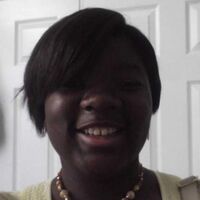
I am a very interesting person. I have been through hell and back, but I have decided to continuously go forward. I have been abused sexually, physically, and emotionally and I am a living testimony that can testify as to how a person can come out of any situation! Email me sometime to find out more questions or feel free to leave comments on my poems and entries. Thanks in advance!!
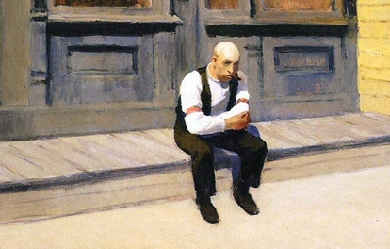
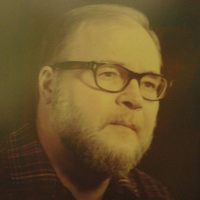
James Arlington Wright (December 13, 1927– March 25, 1980) was an American poet. Life Wright first emerged on the literary scene in 1956 with The Green Wall, a collection of formalist verse that was awarded the prestigious Yale Younger Poets Prize. But by the early 1960s, Wright, increasingly influenced by the Spanish language surrealists, had dropped fixed meters. His transformation achieved its maximum expression with the publication of the seminal The Branch Will Not Break (1963), which positioned Wright as curious counterpoint to the Beats and New York Schools, which predominated on the American coasts. This transformation had not come by accident, as Wright had been working for years with his friend Robert Bly, collaborating on the translation of world poets in the influential magazine The Fifties (later The Sixties). Such influences fertilized Wright’s unique perspective and helped put the Midwest back on the poetic map. Wright had discovered a terse, imagistic, free verse of clarity, and power. During the next ten years Wright would go on to pen some of the most beloved and frequently anthologized masterpieces of the century, such as “A Blessing,” “Autumn Begins in Martins Ferry, Ohio,” and “I Am a Sioux Indian Brave, He Said to Me in Minneapolis.” Wright’s son Franz Wright was also a poet. Together they are the only parent/child pair to have won a Pulitzer Prize in the same category (Poetry). Poetry Wright’s early poetry is relatively conventional in form and meter, especially compared with his later, looser poetry. Although most of his fame comes from his original poetry, Wright made a contribution to another area or literary modernism– the translation. Ezra Pound insisted that translation was in itself an art of the highest creative order. His work with translations of German and South American poets, as well as the poetry and aesthetic position of Robert Bly, had considerable influence on his own poems; this is most evident in The Branch Will Not Break, which departs radically from the formal style of Wright’s previous book, Saint Judas. In addition to his own poetry, he also published loose translations of René Char’s hermetic poems. His poetry often deals with the disenfranchised, or the American outsider. Wright suffered from depression and bipolar mood disorders and also battled alcoholism his entire life. He experienced several nervous breakdowns, was hospitalized, and was subjected to electroshock therapy. His dark moods and focus on emotional suffering were part of his life and often the focus of his poetry, although given the emotional turmoil he experienced personally, his poems can be optimistic in expressing a faith in life and human transcendence. In The Branch Will Not Break, the enduring human spirit becomes thematic. Nevertheless, the last line of his poem “Lying in a Hammock at William Duffy’s Farm in Pine Island, Minnesota” famously ends, “I have wasted my life.” Technically, Wright was an innovator, especially in the use of his titles, first lines, and last lines, which he used to great dramatic effect in defense of the lives of the disenfranchised. He is equally well known for his tender depictions of the bleak landscapes of the post-industrial American Midwest. Since his death, Wright has developed a cult following, transforming him into a seminal writer of significant influence. Hundreds of writers gathered annually for decades following his death to pay tribute at the James Wright Poetry Festival held from 1981 through 2007 in Martins Ferry. His 1972 Collected Poems won the Pulitzer Prize. In addition to his other awards, Wright received a grant from the Rockefeller Foundation. Works Published in his lifetime * Unless otherwise noted, year is when published: * The Green Wall (Yale University Press, 1957) * Saint Judas (Wesleyan University Press, 1959) * The Branch Will Not Break (Wesleyan University Press, 1963) * Autumn Begins in Martins Ferry, Ohio—Broadside (1963) * Shall We Gather at the River (Wesleyan University Press, 1967) * Collected Poems (Wesleyan University Press, 1971) * Two Citizens (Farrar, Straus and Giroux, 1973) * Moments of the Italian Summer (Dryad Press, 1976) * To a Blossoming Pear Tree (Farrar, Straus and Giroux, 1977) * This Journey (1982) Published posthumously * This Journey (1982; completed in 1980) * The Temple at Nîmes (1982) * James Wright, In Defense Against This Exile. Letters To Wayne Burns., edited with an introduction by John R. Doheny (1985) * Above the River - the Complete Poems, introduction by Donald Hall (1992) * Selected Poems (2005) * A Wild Perfection: The Selected Letters of James Wright (2005) * The Delicacy and Strength of Lace: Letters Between Leslie Marmon Silko and James Wright., edited by Anne Wright and Joy Harjo (2009) References Wikipedia—https://en.wikipedia.org/wiki/James_Wright_(poet)

Poetry is an escape. I have never been very good at expressing myself verbally, but with a pen it's so easy. I use poetry as an outlet; it keeps me sane. I believe a lot is wrong with the world. And though I can't do much about it I try an use my poems to open people's eyes to what is happening around them. My style may seem amateur but it is how I choose to write. Poetry is my passion. And I'd like to share my work with as many people as I can because the only way they'll even have a chance at understanding me is through the words I put down on paper.
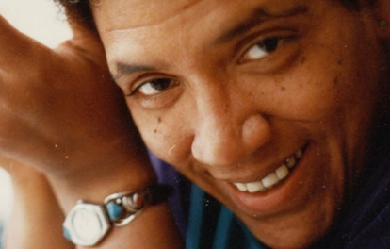
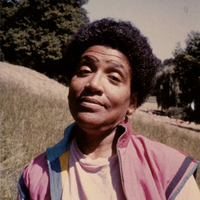
Audre Lorde (/ˈɔːdri lɔːrd/; born Audrey Geraldine Lorde, February 18, 1934– November 17, 1992) was an African American writer, feminist, womanist, lesbian, and civil rights activist. As a poet, she is best known for technical mastery and emotional expression, particularly in her poems expressing anger and outrage at civil and social injustices she observed throughout her life. Her poems and prose largely dealt with issues related to civil rights, feminism, and the exploration of black female identity. In relation to non-intersectional feminism in the United States, Lorde famously said, “Those of us who stand outside the circle of this society’s definition of acceptable women; those of us who have been forged in the crucibles of difference—those of us who are poor, who are lesbians, who are Black, who are older—know that survival is not an academic skill. It is learning how to take our differences and make them strengths. For the master’s tools will never dismantle the master’s house. They may allow us temporarily to beat him at his own game, but they will never enable us to bring about genuine change. And this fact is only threatening to those women who still define the master’s house as their only source of support.” Life and work Lorde was born in New York City to Caribbean immigrants from Barbados and Carriacou, Frederick Byron Lorde (called Byron) and Linda Gertrude Belmar Lorde, who settled in Harlem. Lorde’s mother was of mixed ancestry but could pass for white, a source of pride for her family. Lorde’s father was darker than the Belmar family liked, and they only allowed the couple to marry because of Byron Lorde’s charm, ambition, and persistence. Nearsighted to the point of being legally blind, and the youngest of three daughters (two older sisters, Phyllis and Helen), Audre Lorde grew up hearing her mother’s stories about the West Indies. She learned to talk while she learned to read, at the age of four, and her mother taught her to write at around the same time. She wrote her first poem when she was in eighth grade. Born Audrey Geraldine Lorde, she chose to drop the “y” from her first name while still a child, explaining in Zami: A New Spelling of My Name that she was more interested in the artistic symmetry of the “e”-endings in the two side-by-side names “Audre Lorde” than in spelling her name the way her parents had intended. Lorde’s relationship with her parents was difficult from a young age. She was able to spend very little time with her father and mother, who were busy maintaining their real estate business in the tumultuous economy after the Great Depression, and when she did see them, they were often cold or emotionally distant. In particular, Lorde’s relationship with her mother, who was deeply suspicious of people with darker skin than hers (which Lorde’s was) and the outside world in general, was characterized by “tough love” and strict adherence to family rules. Lorde’s difficult relationship with her mother would figure prominently in later poems, such as Coal’s “Story Books on a Kitchen Table.” As a child, Lorde, who struggled with communication, came to appreciate the power of poetry as a form of expression. She memorized a great deal of poetry, and would use it to communicate, to the extent that, “If asked how she was feeling, Audre would reply by reciting a poem.” Around the age of twelve, she began writing her own poetry and connecting with others at her school who were considered “outcasts” as she felt she was. She attended Hunter College High School, a secondary school for intellectually gifted students, and graduated in 1951. In 1954, she spent a pivotal year as a student at the National University of Mexico, a period she described as a time of affirmation and renewal, during which she confirmed her identity on personal and artistic levels as a lesbian and poet. On her return to New York, she attended Hunter College, graduating class of 1959. There, she worked as a librarian, continued writing and became an active participant in the gay culture of Greenwich Village. She furthered her education at Columbia University, earning a master’s degree in Library Science in 1961. She also worked during this time as a librarian at Mount Vernon Public Library and married attorney Edwin Rollins; they divorced in 1970 after having two children, Elizabeth and Jonathan. In 1966, Lorde became head librarian at Town School Library in New York City, where she remained until 1968. In 1968 Lorde was writer-in-residence at Tougaloo College in Mississippi, where she met Frances Clayton, a white professor of psychology, who was to be her romantic partner until 1989. Lorde’s time at Tougaloo College, like her year at the National University of Mexico, was a formative experience for Lorde as an artist. She led workshops with her young, black undergraduate students, many of whom were eager to discuss the civil rights issues of that time. Through her interactions with her students, she reaffirmed her desire not only to live out her “crazy and queer” identity, but devoted new attention to the formal aspects of her craft as a poet. Her book of poems Cables to Rage came out of her time and experiences at Tougaloo. From 1977 to 1978 Lorde had a brief affair with the sculptor and painter Mildred Thompson. The two met in Nigeria in 1977 at the Second World Black and African Festival of Arts and Culture (FESTAC 77). Their affair ran its course during the time that Thompson lived in Washington, D.C. The Berlin Years In 1984 Audre Lorde started a visiting professorship in Berlin Germany at the Free University of Berlin. She was invited by Dagmar Schultz who met her at the UN “World Women’s Conference” in Copenhagen in 1980. While Lorde was in Germany she made a significant impact on the women there and was a big part of the start of the Afro-German movement. The term Afro-German was created by Lorde and some Black German women as a nod to African-American. During her many trips to Germany, she touched many women’s lives including May Ayim, Ika Hugel-Marshell, and Hegal Emde. All of these women decided to start writing after they met Audre Lorde. She encouraged the women of Germany to speak up and have a voice. Instead of fighting through violence, Lorde thought that language was a powerful form of resistance. Her impact on Germany reached more than just Afro-German women. Many white women and men found Lorde’s work to be very beneficial to their own lives. They started to put their privilege and power into question and became more conscious. Because of her impact on the Afro-German movement, Dagmar Schultz put together a documentary to highlight the chapter of her life that was not known to many. Audre Lorde - The Berlin Years was accepted by the Berlinale in 2012 and from then was showed at many different film festivals around the world and received five awards. The film showed the lack of recognition that Lorde received for her contributions towards the theories of intersectionality. Last years Audre Lorde battled cancer for fourteen years. She was first diagnosed with breast cancer in 1978 and underwent a mastectomy. Six years later, she was diagnosed with liver cancer. After her diagnosis, she chose to become more focused on both her life and her writing. She wrote The Cancer Journals, which won the American Library Association Gay Caucus Book of the Year Award in 1981. She featured as the subject of a documentary called A Litany for Survival: The Life and Work of Audre Lorde, which shows her as an author, poet, human rights activist, feminist, lesbian, a teacher, a survivor, and a crusader against bigotry. She is quoted in the film as saying: “What I leave behind has a life of its own. I’ve said this about poetry; I’ve said it about children. Well, in a sense I’m saying it about the very artifact of who I have been.” From 1991 until her death, she was the New York State Poet Laureate. In 1992, she received the Bill Whitehead Award for Lifetime Achievement from Publishing Triangle. In 2001, Publishing Triangle instituted the Audre Lorde Award to honour works of lesbian poetry. Lorde died of liver cancer on November 17, 1992, in St. Croix, where she had been living with Gloria I. Joseph. She was 58. In an African naming ceremony before her death, she took the name Gamba Adisa, which means “Warrior: She Who Makes Her Meaning Known”. Work Poetry Lorde focused her discussion of difference not only on differences between groups of women but between conflicting differences within the individual. “I am defined as other in every group I’m part of,” she declared. “The outsider, both strength and weakness. Yet without community there is certainly no liberation, no future, only the most vulnerable and temporary armistice between me and my oppression”. She described herself both as a part of a “continuum of women” and a “concert of voices” within herself. Her conception of her many layers of selfhood is replicated in the multi-genres of her work. Critic Carmen Birkle wrote: “Her multicultural self is thus reflected in a multicultural text, in multi-genres, in which the individual cultures are no longer separate and autonomous entities but melt into a larger whole without losing their individual importance.” Her refusal to be placed in a particular category, whether social or literary, was characteristic of her determination to come across as an individual rather than a stereotype. Lorde considered herself a “lesbian, mother, warrior, poet” and used poetry to get this message across. Lorde’s poetry was published very regularly during the 1960s—in Langston Hughes’ 1962 New Negro Poets, USA; in several foreign anthologies; and in black literary magazines. During this time, she was also politically active in civil rights, anti-war, and feminist movements. In 1968, Lorde published The First Cities, her first volume of poems. It was edited by Diane di Prima, a former classmate and friend from Hunter College High School. The First Cities has been described as a “quiet, introspective book,” and Dudley Randall, a poet and critic, asserted in his review of the book that Lorde “does not wave a black flag, but her blackness is there, implicit, in the bone”. Her second volume, Cables to Rage (1970), which was mainly written during her tenure as poet-in-residence at Tougaloo College in Mississippi, addressed themes of love, betrayal, childbirth, and the complexities of raising children. It is particularly noteworthy for the poem “Martha,” in which Lorde openly confirms her homosexuality for the first time in her writing: "[W]e shall love each other here if ever at all.” Nominated for the National Book Award for poetry in 1973, From a Land Where Other People Live (Broadside Press) shows Lorde’s personal struggles with identity and anger at social injustice. The volume deals with themes of anger, loneliness, and injustice, as well as what it means to be an African-American woman, mother, friend, and lover. 1974 saw the release of New York Head Shop and Museum, which gives a picture of Lorde’s New York through the lenses of both the civil rights movement and her own restricted childhood: stricken with poverty and neglect and, in Lorde’s opinion, in need of political action. Despite the success of these volumes, it was the release of Coal in 1976 that established Lorde as an influential voice in the Black Arts Movement (Norton), as well as introducing her to a wider audience. The volume includes poems from both The First Cities and Cables to Rage, and it unties many of the themes Lorde would become known for throughout her career: her rage at racial injustice, her celebration of her black identity, and her call for an intersectional consideration of women’s experiences. Lorde followed Coal up with Between Our Selves (also in 1976) and Hanging Fire (1978). In Lorde’s volume The Black Unicorn (1978), she describes her identity within the mythos of African female deities of creation, fertility, and warrior strength. This reclamation of African female identity both builds and challenges existing Black Arts ideas about pan-Africanism. While writers like Amiri Baraka and Ishmael Reed utilized African cosmology in a way that “furnished a repertoire of bold male gods capable of forging and defending an aboriginal black universe,” in Lorde’s writing “that warrior ethos is transferred to a female vanguard capable equally of force and fertility.” Lorde’s poetry became more open and personal as she grew older and became more confident in her sexuality. In Sister Outsider: Essays and Speeches, Lorde states, "Poetry is the way we help give name to the nameless so it can be thought…As they become known to and accepted by us, our feelings and the honest exploration of them become sanctuaries and spawning grounds for the most radical and daring ideas." Sister Outsider also elaborates Lorde’s challenge to European-American traditions. Prose The Cancer Journals (1980), derived in part from personal journals written in the late seventies, and A Burst of Light (1988) both use non-fiction prose to preserve, explore, and reflect on Lorde’s diagnosis, treatment, and recovery from breast cancer. In both works, Lorde deals with Western notions of illness, treatment, and physical beauty and prosthesis, as well as themes of death, fear of mortality, victimization versus survival, and inner power. Lorde’s deeply personal novel Zami: A New Spelling of My Name (1982), described as a “biomythography,” chronicles her childhood and adulthood. The narrative deals with the evolution of Lorde’s sexuality and self-awareness. In Sister Outsider: Essays and Speeches (1984), Lorde asserts the necessity of communicating the experience of marginalized groups in order to make their struggles visible in a repressive society. She emphasizes the need for different groups of people (particularly white women and African-American women) to find common ground in their lived experience. One of her works in Sister Outsider: Essays and Speeches is “The Master’s Tools Will Never Dismantle the Master’s House.” Lorde questions the scope and ability for change to be instigated when examining problems through a racist, patriarchal lens. She insists that women see differences between other women not as something to be tolerated, but something that is necessary to generate power and to actively “be” in the world. This will create a community that embraces differences, which will ultimately lead to liberation. Lorde elucidates, “Divide and conquer, in our world, must become define and empower." Also, one must educate themselves about the oppression of others because expecting a marginalized group to educate the oppressors is the continuation of racist, patriarchal thought. She explains that this is a major tool utilized by oppressors to keep the oppressed occupied with the master’s concerns. She concludes that in order to bring about real change, we cannot work within the racist, patriarchal framework because change brought about in that will not remain. Another work in Sister Outsider: Essays and Speeches is “The Transformation of Silence into Language and Action.*” Lorde discusses the importance of speaking, even when afraid because one’s silence will not protect them from being marginalized and oppressed. Many people fear to speak the truth because of how it may cause pain, however, one ought to put fear into perspective when deliberating whether to speak or not. Lorde emphasizes that “the transformation of silence into language and action is a self-revelation, and that always seems fraught with danger." People are afraid of others’ reactions for speaking, but mostly for demanding visibility, which is essential to live. Lorde adds, “We can sit in our corners mute forever while our sisters and ourselves are wasted, while our children are distorted and destroyed, while our earth is poisoned; we can sit in our safe corners mute as bottles, and we will still be no less afraid." People are taught to respect their fear of speaking more than silence, but ultimately, the silence will choke us anyway, so we might as well speak the truth. In 1980, together with Barbara Smith and Cherríe Moraga, she co-founded Kitchen Table: Women of Color Press, the first U.S. publisher for women of color. Lorde was State Poet of New York from 1991 to 1992. Theory Her writings are based on the “theory of difference,” the idea that the binary opposition between men and women is overly simplistic; although feminists have found it necessary to present the illusion of a solid, unified whole, the category of women itself is full of subdivisions. Lorde identified issues of class, race, age, gender, and even health– this last was added as she battled cancer in her later years– as being fundamental to the female experience. She argued that, although differences in gender have received all the focus, it is essential that these other differences are also recognized and addressed. “Lorde,” writes the critic Carmen Birkle, “puts her emphasis on the authenticity of experience. She wants her difference acknowledged but not judged; she does not want to be subsumed into the one general category of ‘woman.’” This theory is today known as intersectionality. While acknowledging that the differences between women are wide and varied, most of Lorde’s works are concerned with two subsets that concerned her primarily—race and sexuality. In Ada Gay Griffin and Michelle Parkerson’s documentary A Litany for Survival: The Life and Work of Audre Lorde, Lorde says, "Let me tell you first about what it was like being a Black woman poet in the ‘60s, from jump. It meant being invisible. It meant being really invisible. It meant being doubly invisible as a Black feminist woman and it meant being triply invisible as a Black lesbian and feminist". In her essay “The Erotic as Power,” written in 1978 and collected in Sister Outsider, Lorde theorizes the Erotic as a site of power for women only when they learn to release it from its suppression and embrace it. She proposes that the Erotic needs to be explored and experienced wholeheartedly, because it exists not only in reference to sexuality and the sexual, but also as a feeling of enjoyment, love, and thrill that is felt towards any task or experience that satisfies women in their lives, be it reading a book or loving one’s job. She dismisses “the false belief that only by the suppression of the erotic within our lives and consciousness can women be truly strong. But that strength is illusory, for it is fashioned within the context of male models of power.” She explains how patriarchal society has misnamed it used it against women, causing women to fear it. Women also fear it because the erotic is powerful and a deep feeling. Women must share each others’ power rather than use it without consent, which is abuse. They should do it as a method to connect everyone in their differences and similarities. Utilizing, the erotic as power allows women to use their knowledge and power to face the issues of racism, patriarchy, and our anti-erotic society. Contemporary feminist thought Lorde set out to confront issues of racism in feminist thought. She maintained that a great deal of the scholarship of white feminists served to augment the oppression of black women, a conviction that led to angry confrontation, most notably in a blunt open letter addressed to the fellow radical lesbian feminist Mary Daly, to which Lorde claimed she received no reply. Daly’s reply letter to Lorde, dated 4½ months later, was found in 2003 in Lorde’s files after she died. This fervent disagreement with notable white feminists furthered Lorde’s persona as an outsider: "In the institutional milieu of black feminist and black lesbian feminist scholars [...] and within the context of conferences sponsored by white feminist academics, Lorde stood out as an angry, accusatory, isolated black feminist lesbian voice". The criticism was not one-sided: many white feminists were angered by Lorde’s brand of feminism. In her 1984 essay “The Master’s Tools Will Never Dismantle the Master’s House,” Lorde attacked underlying racism within feminism, describing it as unrecognized dependence on the patriarchy. She argued that, by denying difference in the category of women, white feminists merely furthered old systems of oppression and that, in so doing, they were preventing any real, lasting change. Her argument aligned white feminists who did not recognize race as a feminist issue with white male slave-masters, describing both as “agents of oppression.” Lorde’s comments on feminism In Audre Lorde’s “Age, Race, Class, and Sex: Women Redefining Difference,” she writes: “Certainly there are very real differences between us of race, age, and sex. But it is not those differences between us that are separating us. It is rather our refusal to recognize those differences, and to examine the distortions which result from our misnaming them and their effects upon human behavior and expectation.” More specifically she states: “As white women ignore their built-in privilege of whiteness and define woman in terms of their own experience alone, then women of color become ‘other’.” Self-identified as “a forty-nine-year-old Black lesbian feminist socialist mother of two,” Lorde is considered as “other, deviant, inferior, or just plain wrong” in the eyes of the normative “white male heterosexual capitalist” social hierarchy. “We speak not of human difference, but of human deviance,” she writes. In this respect, Lorde’s ideology coincides with womanism, which “allows black women to affirm and celebrate their color and culture in a way that feminism does not.” Influences on Black Feminism Lorde’s work on black feminism continues to be examined by scholars today. Jennifer C. Nash examines how black feminists acknowledge their identities and find love for themselves through those differences. Nash cites Lorde, who writes, “I urge each one of us here to reach down into that deep place of knowledge inside herself and touch that terror and loathing of any difference that lives there. See whose face it wears. Then the personal as the political can begin to illuminate all our choices." Nash explains that Lorde is urging black feminists to embrace politics rather than fear it, which will lead to an improvement in society for them. Lorde adds, “Black women sharing close ties with each other, politically or emotionally, are not the enemies of Black men. Too frequently, however, some Black men attempt to rule by fear those Black women who are more ally than enemy.” Lorde insists that the fight between black women and men must end in order to end racist politics. Personal Identity Throughout Lorde’s career she included the idea of a collective identity in many of her poems and books. Audre Lorde did not just identify with one category but she wanted to celebrate all parts of herself equally. She was known to describe herself as African-American, black, feminist, poet, mother, etc. In her novel Zami: A New Spelling of My Name Lorde focuses on how her many different identities shape her life and the different experiences she has because of them. She shows us that personal identity is found within the connections between seemingly different parts of life. Personal identity is often associated with the visual aspect of a person, but as Lies Xhonneux theorizes when identity is singled down to just to what you see, some people, even within minority groups, can become invisible. In her late book The Cancer Journals she said “If I didn’t define myself for myself, I would be crunched into other people’s fantasies for me and eaten alive.” This is important because an identity is more than just what people see or think of a person, it is something that must be defined by the individual. “The House of Difference” is a phrase that has stuck with Lorde’s identity theories. Her idea was that everyone is different from each other and it is the collective differences that make us who we are, instead of one little thing. Focusing on all of the aspects of identity brings people together more than choosing one piece of an identity. Audre Lorde and womanism Audre Lorde’s criticism of feminists of the 1960s identified issues of race, class, age, gender and sexuality. Similarly, author and poet Alice Walker coined the term “womanist” in an attempt to distinguish black female and minority female experience from “feminism”. While “feminism” is defined as “a collection of movements and ideologies that share a common goal: to define, establish, and achieve equal political, economic, cultural, personal, and social rights for women” by imposing simplistic opposition between “men” and “women,” the theorists and activists of the 1960s and 1970s usually neglected the experiential difference caused by factors such as race and gender among different social groups. Womanism and its ambiguity Womanism’s existence naturally opens various definitions and interpretations. Alice Walker’s comments on womanism, that “womanist is to feminist as purple is to lavender,” suggests that the scope of study of womanism includes and exceeds that of feminism. In its narrowest definition, womanism is the black feminist movement that was formed in response to the growth of racial stereotypes in the feminist movement. In a broad sense, however, womanism is “a social change perspective based upon the everyday problems and experiences of black women and other women of minority demographics,” but also one that “more broadly seeks methods to eradicate inequalities not just for black women, but for all people” by imposing socialist ideology and equality. However, because womanism is open to interpretation, one of the most common criticisms of womanism is its lack of a unified set of tenets. It is also criticized for its lack of discussion of sexuality. Lorde actively strived for the change of culture within the feminist community by implementing womanist ideology. In the journal "Anger Among Allies: Audre Lorde’s 1981 Keynote Admonishing the National Women’s Studies Association," it is stated that Lorde’s speech contributed to communication with scholars’ understanding of human biases. While “anger, marginalized communities, and US Culture” are the major themes of the speech, Lorde implemented various communication techniques to shift subjectivities of the “white feminist” audience. Lorde further explained that “we are working in a context of oppression and threat, the cause of which is certainly not the angers which lie between us, but rather that virulent hatred leveled against all women, people of color, lesbians and gay men, poor people—against all of us who are seeking to examine the particulars of our lives as we resist our oppressions, moving towards coalition and effective action.” Audre Lorde and critique of womanism A major critique of womanism is its failure to explicitly address homosexuality within the female community. Very little womanist literature relates to lesbian or bisexual issues, and many scholars consider the reluctance to accept homosexuality accountable to the gender simplistic model of womanism. According to Lorde’s essay “Age, Race, Class, and Sex: Women Redefining Difference,” “the need for unity is often misnamed as a need for homogeneity.” She writes, “A fear of lesbians, or of being accused of being a lesbian, has led many Black women into testifying against themselves.” Contrary to this, Audre Lorde was very open to her own sexuality and sexual awakening. In Zami: A New Spelling of My Name, her famous “biomythography” (a term coined by Lorde that combines “biography” and “mythology”) she writes, “Years afterward when I was grown, whenever I thought about the way I smelled that day, I would have a fantasy of my mother, her hands wiped dry from the washing, and her apron untied and laid neatly away, looking down upon me lying on the couch, and then slowly, thoroughly, our touching and caressing each other’s most secret places.” According to scholar Anh Hua, Lorde turns female abjection—menstruation, female sexuality, and female incest with the mother—into powerful scenes of female relationship and connection, thus subverting patriarchal heterosexist culture. With such a strong ideology and open-mindedness, Lorde’s impact on lesbian society is also significant. An attendee of a 1978 reading of Lorde’s essay “Uses for the Erotic: the Erotic as Power” says: “She asked if all the lesbians in the room would please stand. Almost the entire audience rose.” Tributes The Callen-Lorde Community Health Center is an organization in New York City named for Michael Callen and Audre Lorde, which is dedicated to providing medical health care to the city’s LGBT population without regard to ability to pay. Callen-Lorde is the only primary care center in New York City created specifically to serve the LGBT community. The Audre Lorde Project, founded in 1994, is a Brooklyn-based organization for queer people of color. The organization concentrates on community organizing and radical nonviolent activism around progressive issues within New York City, especially relating to queer and transgender communities, AIDS and HIV activism, pro-immigrant activism, prison reform, and organizing among youth of color. The Audre Lorde Award is an annual literary award presented by Publishing Triangle to honor works of lesbian poetry, first presented in 2001. In 2014 Lorde was inducted into the Legacy Walk, an outdoor public display in Chicago, Illinois that celebrates LGBT history and people.
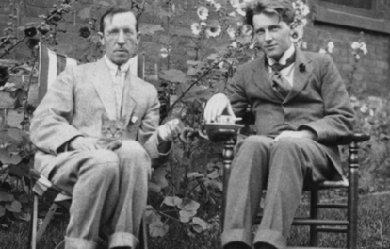
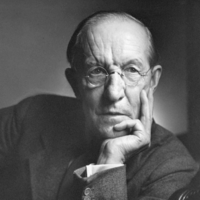
Duncan Campbell Scott (August 2, 1862– December 19, 1947) was a Canadian bureaucrat, poet and prose writer. With Charles G.D. Roberts, Bliss Carman, and Archibald Lampman, he is classed as one of Canada’s Confederation Poets. Scott was a Canadian lifetime civil servant who served as deputy superintendent of the Department of Indian Affairs from 1913 to 1932, and is better known today for advocating the assimilation of Canada’s First Nations peoples in that capacity. Life and legacy Scott was born in Ottawa, Ontario, the son of Rev. William Scott and Janet MacCallum. He was educated at Stanstead Wesleyan College. Early in life, he became an accomplished pianist. Scott wanted to be a doctor, but family finances were precarious, so in 1879 he joined the federal civil service. As the story goes, q:William Scott might not have money [but] he had connections in high places. Among his acquaintances was the prime minister, Sir John A. Macdonald, who agreed to meet with Duncan. As chance would have it, when Duncan arrived for his interview, the prime minister had a memo on his desk from the Indian Branch of the Department of the Interior asking for a temporary copying clerk. Making a quick decision while the serious young applicant waited in front of him, Macdonald wrote across the request: 'Approved. Employ Mr. Scott at $1.50.’ Scott "spent his entire career in the same branch of government, working his way up to the position of deputy superintendent of Indian Affairs in 1913, the highest non-elected position possible in his department. He remained in this post until his retirement in 1932.” Scott’s father also subsequently found work in Indian Affairs, and the entire family moved into a newly built house on 108 Lisgar St., where Duncan Campbell Scott would live for the rest of his life. In 1883 Scott met fellow civil servant, Archibald Lampman. It was the beginning of an instant friendship that would continue unbroken until Lampman’s death sixteen years later.... It was Scott who initiated wilderness camping trips, a recreation that became Lampman’s favourite escape from daily drudgery and family problems. In turn, Lampman’s dedication to the art of poetry would inspire Scott’s first experiments in verse. By the late 1880s Scott was publishing poetry in the prestigious American magazine, Scribner’s. In 1889 his poems “At the Cedars” and “Ottawa” were included in the pioneering anthology, Songs of the Great Dominion. Scott and Lampman "shared a love of poetry and the Canadian wilderness. During the 1890s the two made a number of canoe trips together in the area north of Ottawa.” In 1892 and 1893, Scott, Lampman, and William Wilfred Campbell wrote a literary column, “At the Mermaid Inn,” for the Toronto Globe. "Scott... came up with the title for it. His intention was to conjure up a vision of The Mermaid Inn Tavern in old London where Sir Walter Raleigh founded the famous club whose members included Ben Jonson, Beaumont and Fletcher, and other literary lights. In 1893 Scott published his first book of poetry, The Magic House and Other Poems. It would be followed by seven more volumes of verse: Labor and the Angel (1898), New World Lyrics and Ballads (1905), Via Borealis (1906), Lundy’s Lane and Other Poems (1916), Beauty and Life (1921), The Poems of Duncan Campbell Scott (1926) and The Green Cloister (1935). In 1894, Scott married Belle Botsford, a concert violinist, whom he had met at a recital in Ottawa. They had one child, Elizabeth, who died at 12. Before she was born, Scott asked his mother and sisters to leave his home (his father had died in 1891), causing a long-time rift in the family. In 1896 Scott published his first collection of stories, In the Village of Viger, "a collection of delicate sketches of French Canadian life. Two later collections, The Witching of Elspie (1923) and The Circle of Affection (1947), contained many fine short stories." Scott also wrote a novel, although it was not published until after his death (as The Untitled Novel, in 1979). After Lampman died in 1899, Scott helped publish a number of editions of Lampman’s poetry. Scott “was a prime mover in the establishment of the Ottawa Little Theatre and the Dominion Drama Festival.” In 1923 the Little Theatre performed his one-act play, Pierre; it was later published in Canadian Plays from Hart House Theatre (1926). His wife died in 1929. In 1931 he married poet Elise Aylen, more than 30 years his junior. After he retired the next year, "he and Elise spent much of the 1930s and 1940s travelling in Europe, Canada and the United States.” He died in December 1947 in Ottawa at the age of 85 and is buried in Ottawa’s Beechwood Cemetery. Indian Affairs Prior to taking up his position as head of the Department of Indian Affairs, in 1905 Scott was one of the Treaty Commissioners sent to negotiate Treaty No. 9 in Northern Ontario. Aside from his poetry, Scott made his mark in Canadian history as the head of the Department of Indian Affairs from 1913 to 1932. Even before Confederation, the Canadian government had adopted a policy of assimilation under the Gradual Civilization Act 1857. One biographer of Scott states that: The Canadian government’s Indian policy had already been set before Scott was in a position to influence it, but he never saw any reason to question its assumption that the 'red’ man ought to become just like the 'white’ man. Shortly after he became Deputy Superintendent, he wrote approvingly: ‘The happiest future for the Indian race is absorption into the general population, and this is the object and policy of our government.’... Assimilation, so the reasoning went, would solve the ‘Indian problem,’ and wrenching children away from their parents to 'civilize’ them in residential schools until they were eighteen was believed to be a sure way of achieving the government’s goal. Scott... would later pat himself on the back: ‘I was never unsympathetic to aboriginal ideals, but there was the law which I did not originate and which I never tried to amend in the direction of severity.’ while Scott himself wrote: I want to get rid of the Indian problem. I do not think as a matter of fact, that the country ought to continuously protect a class of people who are able to stand alone… Our objective is to continue until there is not a single Indian in Canada that has not been absorbed into the body politic and there is no Indian question, and no Indian Department, that is the whole object of this Bill. In 1920, under Scott’s direction, and with the concurrence of the major religions involved in native education, an amendment to the Indian Act made it mandatory for all native children between the ages of seven and fifteen to attend school. Attendance at a residential school was made compulsory. Although a reading of Bill 14 states that no particular kind of school was stipulated. Scott was in favour of residential schooling for aboriginal children, as he believed removing them from the influences of home and reserve would hasten the cultural and economic transformation of the whole aboriginal population. In cases where a residential school was the only kind available, residential enrollment did become mandatory, and aboriginal children were compelled to leave their homes, their families and their culture, with or without their parents’ consent. However, in 1901, 226 of the 290 Indian schools across Canada were day schools, and by 1961, the 377 day schools far outnumbered the 56 residential institutions. CBC has reported that "In all, about 150,000 aboriginal, Inuit and Métis children were removed from their communities and forced to attend the schools." The 150,000 enrollment figure is an estimate not disputed by Aboriginal Affairs and Northern Development, but it is not clear what percentage were “removed from their communities and forced to attend the schools.” A percentage of the residential schools were in or close by the children’s communities. Moreover, while many aboriginal parents distrusted the residential schools or preferred to raise and educate their children in a traditional manner, other parents willingly enrolled their children, partly from a belief that the schooling of the “white man” would benefit them, and partly from a knowledge that schools would provide shelter, food and clothing which dire conditions on the reserve could not provide. Harsh criticism has been leveled at Scott and the residential school system, as children who attended some of the more poorly maintained or administered schools lived in terrible conditions; in some cases the mortality rate exceeded fifty percent due to the spread of infectious disease. This situation was made worse by the federal policy that tied funding to enrollment numbers, which resulted in some schools enrolling sick children in order to boost their numbers. Echoing Scott’s desire to absorb aboriginals into the wider Canadian population, many residential and day schools strongly discouraged students from speaking their native language, and harsh punishments were administered. Corporal punishment was sometimes justified by the belief that it was the only way to “save souls”, “civilize” the native children and, in the residential schools, punish runaways who might make the school responsible for injury or death while trying to return home. Many reports of physical, sexual and psychological abuse in the residential schools have surfaced over the years. Because any kind of scandal coming out of the residential schools would have caused Indian Affairs, the churches and the government of the day much embarrassment, incidents of abuse were often discounted or covered up. When Scott retired, his “policy of assimilating the Indians had been so much in keeping with the thinking of the time that he was widely praised for his capable administration.” At the time, Scott was able to point to evidence of success in increasing enrollment and attendance, as the number of First Nations children enrolled in any school rose from 11,303 in 1912 to 17,163 in 1932. Residential school enrollment during the same period rose from 3,904 to 8,213. Actual attendance figures from all schools had also risen sharply, going from 64% of enrollment in 1920 to 75% in 1930, and Scott attributed this rise partly to Bill 14's section on compulsory attendance but also to a more positive attitude among First Nations people toward education. However, despite the encouraging statistics, Scott’s efforts to bring about assimilation through residential schools could be judged a failure, as many former students retained their language, went on to maintain and preserve their tribe’s culture, and refused to accept full Canadian citizenship when it was offered. Moreover, over the long history of the residential system, only a minority of all enrolled students went beyond the elementary grades, and many former students found themselves lacking the skills that would enable them to find employment on or off the reserve. Honours and awards Scott was honoured for his writing during and after his lifetime. He was elected a Fellow of the Royal Society of Canada in 1899 and served as its president from 1921 to 1922. The Society awarded him the second-ever Lorne Pierce Medal in 1927 for his contributions to Canadian literature. In 1934 he was made a Companion of the Order of St. Michael and St. George. He also received honorary degrees from the University of Toronto (Doctor of Letters in 1922) and Queen’s University (Doctor of Laws in 1939). In 1948, the year after his death, he was designated a Person of National Historic Significance. Poetry Scott’s "literary reputation has never been in doubt. He has been well represented in virtually all major anthologies of Canadian poetry published since 1900.” In Poets of the Younger Generation (1901), Scottish literary critic William Archer wrote of Scott: He is above everything a poet of climate and atmosphere, employing with a nimble, graphic touch the clear, pure, transparent colours of a richly-furnished palette.... Though it must not be understood that his talent is merely descriptive. There is a philosophic and also a romantic strain in it... There is scarcely a poem of Mr. Scott’s from which one could not cull some memorable descriptive passage.... As a rule Mr. Scott’s workmanship is careful and highly finished. He is before everything a colourist. He paints in lines of a peculiar and vivid translucency. But he is also a metrist of no mean skill, and an imaginative thinker of no common capacity. The Government of Canada biography of him says that: Although the quality of Scott’s work is uneven, he is at his best when describing the Canadian wilderness and Indigenous peoples. Although they constitute a small portion of his total output, Scott’s widely recognized and valued 'Indian poems’ cemented his literary reputation. In these poems, the reader senses the conflict that Scott felt between his role as an administrator committed to an assimilation policy for Canada’s Native peoples and his feelings as a poet, saddened by the encroachment of European civilization on the Indian way of life. “There is not a really bad poem in the book,” literary critic Desmond Pacey said of Scott’s first book, The Magic House and Other Poems, “and there are a number of extremely good ones.” The 'extremely good ones’ include the strange, dream-like sonnets of “In the House of Dreams.” “Probably the best known poem from the collection is ‘At the Cedars,’ a grim narrative about the death of a young man and his sweetheart during a log-jam on the Ottawa River. It is crudely melodramatic,... but its style—stark understatement, irregular lines, and abrupt rhymes—makes it the most experimental poem in the book.” His next book, Labour and the Angel, “is a slighter volume than The Magic House in size and content. The lengthy title poem makes dreary reading.... Of greater interest is his growing willingness to experiment with stanza form, variations in line length, use of partial rhyme, and lack of rhyme.” Notable new poems included “The Cup” and the sonnet “The Onandaga Madonna.” But arguably “the most memorable poem in the new collection” was the fantasy, “The Piper of Arll.” One person who long remembered that poem was future British Poet Laureate John Masefield, who read “The Piper of Arll” as a teenager and years later wrote to Scott: I had never (till that time) cared very much for poetry, but your poem impressed me deeply, and set me on fire. Since then poetry has been the one deep influence in my life, and to my love of poetry I owe all my friends, and the position I now hold. New World Lyrics and Ballads (1905) revealed “a voice that is sounding ever more different from the other Confederation Poets... his dramatic power is increasingly apparent in his response to the wilderness and the lives of the people who lived there.” The poetry included “On the Way to the Mission” and the much-anthologized “The Forsaken,” two of Scott’s best-known “Indian poems.” Lundy’s Lane and Other Poems (1916) seemed “to have been cobbled together at the insistence of his publishers, who wanted a collection of his work that had not been published in any previous volume.”. The title poem was one that had won Scott, "in the Christmas Globe contest of 1908,... the prize of one hundred dollars, offered for the best poem on a Canadian historical theme.". Other notable poems in the volume include the pretty lyric “A Love Song,” the long meditation, “The Height of Land,” and the even longer “Lines Written in Memory of Edmund Morris.” Anthologist John Garvin called the last “so original, tender and beautiful that it is destined to live among the best in Canadian literature.” “In his old age, Scott would look back upon Beauty and Life (1921) as his favourite among his volumes of verse," E.K. Brown tells us, adding: “In it most of the poetic kinds he cared about are represented.” There is a great diversity, from the moving war elegy “To a Canadian Aviator Who Died For His Country in France,” to the strange, apocalyptic “A Vision.” The Green Cloister, published after Scott’s retirement, "is a travelogue of the sites he visited in Europe with Elise: Lake Como, Ravelllo, Kensington Gardens, East Gloucester, etc.—descriptive and contemplative poems by an observant tourist. Those with a Canadian setting include two Indian poems of near-melodrama—'A Scene at Lake Manitou’ and 'At Gull Lake, August 1810'—that are in stark contrast to the overall serenity of the volume." More typical is the title poem, “Chiostro Verde.” The Circle of Affection (1947) contains 26 poems Scott had written since Cloister, and several prose pieces, including his Royal Society address on “Poetry and Progress.” It includes “At Delos,” which brings to mind the poet’s approaching death: There is no grieving in the world As beauty fades throughout the years: The pilgrim with the weary heart Brings to the grave his tears. Reputation as an assimilationist In 2003, Scott’s Indian Affairs legacy came under attack from Neu and Therrien: [Scott] took a romantic interest in Native traditions, he was after all a poet of some repute (a member of the Royal Society of Canada), as well as being an accountant and a bureaucrat . He was three people rolled into one confusing and perverse soul. The poet romanticized the whole 'noble savage’ theme, the bureaucrat lamented our inability to become civilized, the accountant refused to provide funds for the so-called civilization process. In other words, he disdained all ‘living’ Natives but “extolled the freedom of the savages”. According to Encyclopædia Britannica, Scott is "best known at the end of the 20th century," not for his writing, but “for advocating the assimilation of Canada’s First Nations peoples.” As part of their Worst Canadian poll, a panel of experts commissioned by Canada’s National History Society named Scott one of the Worst Canadians in the August 2007 issue of The Beaver. In his 2013 Conversations with a Dead Man: The Legacy of Duncan Campbell Scott, fabulist Mark Abley explored the paradoxes surrounding Scott’s career. Abley did not attempt to defend Scott’s work as a bureaucrat, but he showed that Scott is more than simply a one-dimensional villain. Controversy over Arc Poetry prize Arc Poetry Magazine renamed the annual “Archibald Lampman Award” (given to a poet in the National Capital Region) to the Lampman-Scott Award in recognition of Scott’s enduring legacy in Canadian poetry, with the first award under the new name given out in 2007. The winner of the 2008 award, Shane Rhodes, turned over half of the $1,500 prize money to the Wabano Centre for Aboriginal Health, a First Nations health centre. “Taking that money wouldn’t have been right, with what I’m writing about,” Rhodes said. The poet was researching First Nations history and found Scott’s name repeatedly referenced. In the words of a CBC News report, Rhodes felt “Scott’s legacy as a civil servant overshadows his work as a pioneer of Canadian poetry”. The editor of Arc Poetry Magazine, Anita Lahey, responded with a statement that she thought Scott’s actions as head of Indian Affairs were important to remember, but did not eclipse his role in the history of Canadian literature. “I think it matters that we’re aware of it and that we think about and talk about these things,” she said. “I don’t think controversial or questionable activities in the life of any artist or writer is something that should necessarily discount the literary legacy that they leave behind.” More recently, the magazine has stated on its website that "For the years 2007 through 2009, the Archibald Lampman Award merged with the Duncan Campbell Scott Foundation to become the Lampman-Scott Award in honour of two great Confederation Poets. This partnership came to an end in 2010, and the prize returned to its former identity as the Archibald Lampman Award for Poetry.” Publications Poetry * The Magic House and Other Poems. London: Methuen and Co. 1893. - The Magic House and Other Poems at Google Books * Labor and the Angel. Boston: Copeland & Day. 1898. – Labor and the Angel at Google Books– Labor and the Angel - Scholar’s Choice Edition at Google Books * New World Lyrics and Ballads. Toronto: Morang & Co. – New World Lyrics and Ballads at Google Books– New World Lyrics and Ballads - Scholar’s Choice Edition at Google Books * Via Borealis. Toronto: W. Tyrell. 1906. * Lundy’s Lane and Other Poems. Toronto: McClelland, Stewart & Stewart. 1916. - Lundy’s Lane and Other Poems at Google Books * To the Canadian Mothers and Three Other Poems. Toronto: Mortimer. 1917. * “After a Night of Storm” (PDF). Dalhousie Review 1 (2). 1921. * Beauty and Life. Toronto: McClelland & Stewart. 1921. - Beauty and Life at Google Books * “Permanence” (PDF). Dalhousie Review 2 (4). 1923. * The Poems of Duncan Campbell Scott. Toronto: McClelland & Stewart. 1926. - The Poems of Duncan Campbell Scott at Google Books * “By the Sea” (PDF). Dalhousie Review 7 (1). 1927. * The Green Cloister: Later Poems. Toronto: McClelland & Stewart. 1935. - The Green Cloister: Later Poems at Google Books * Brown, E.K., ed. (1951). Selected Poems. Toronto: Ryerson. * Clever, Glenn, ed. (1974). Duncan Campbell Scott: Selected Poetry. Ottawa: Tecumseh. ISBN 978-0-9196-6252-0. * Souster, Raymond; Lochhead, Douglas, eds. (1985). Powassan’s Drum: Selected Poems of Duncan Campbell Scott. Ottawa: Tecumseh. ISBN 978-0-9196-6211-7. Fiction * In the Village of Viger. Boston: Copeland & Day. 1896. - In the Village of Viger at Google Books * The Witching of Elspie: A Book of Stories. Toronto: McClelland & Stewart. 1923. * The Circle of Affection and Other Pieces in Prose and Verse. Toronto: McClelland & Stewart. 1947. - mostly prose * Clever, Glenn, ed. (1987) [1972]. Selected Stories of Duncan Campbell Scott (revised 3rd ed.). Ottawa: University of Ottawa Press. ISBN 978-0-7766-0183-0. * Untitled Novel (posthumously published). Moonbeam, Ontario: Penumbra. 1979 [c. 1905]. ISBN 0-920806-04-X. * Ware, Tracy, ed. (2001). “The Uncollected Short Stories of Duncan Campbell Scott”. Duncan Campbell Scott. London, Ontario: Canadian Poetry Press. Non-fiction * John Graves Simcoe. Makers of Canada, volume VII. Toronto: Morang & Co. 1905. - John Graves Simcoe at Google Books * The Administration of Indian Affairs in Canada. Volume 3. Toronto: Canadian Institute of International Affairs. 1931. * Walter J. Phillips. Toronto: Ryerson. 1947. - Walter J. Phillips at Google Books * Bourinot, Arthur S., ed. (1960). More Letters of Duncan Campbell Scott. Ottawa: Bourinot. * Davies, Barrie, ed. (1979). At the Mermaid Inn: Wilfred Campbell, Archibald Lampman, Duncan Campbell Scott in the Globe 1892–93. Toronto: University of Toronto Press. ISBN 978-0-8020-6333-5. * Macdougall, Robert L., ed. (1983). The Poet and the Critic: A Literary Correspondence Between Duncan Campbell Scott and E.K. Brown. Ottawa: Carleton University Press. ISBN 978-0-8862-9013-9. Edited * Lampman, Archibald (1900). Scott, Duncan Campbell, ed. The Poems of Archibald Lampman. Toronto: Morang & Co. * Lampman, Archibald (1925). Scott, Duncan Campbell, ed. Lyrics of Earth: Sonnets and Ballads. Toronto: Musson. * Lampman, Archibald (1943). Scott, Duncan Campbell, ed. At the Long Sault and Other New Poems. Toronto: Ryerson. * Lampman, Archibald (1947). Scott, Duncan Campbell, ed. Selected Poems of Archibald Lampman. Toronto: Ryerson. References Wikipedia—https://en.wikipedia.org/wiki/Duncan_Campbell_Scott

Tomás Martín Feuillet (La Chorrera, Panamá, 18 de septiembre de 1832 - Piendamó, febrero de 1862) fue un poeta, escritor romántico y militar panameño. Fue hijo de Leandra Morales, una humilde mujer que lo entregó a don José Martín y doña Juliana Feuillet de Martín en la ciudad de Panamá, quienes lo adoptaron como su hijo bajo el nombre de Tomás Martín Feuillet. Su poema más sobresaliente fue «La Flor del Espíritu Santo», dedicado a la flor nacional de Panamá.
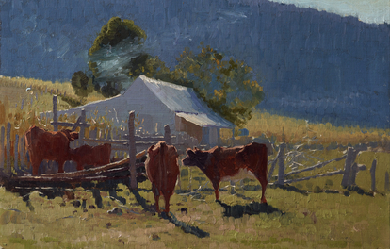
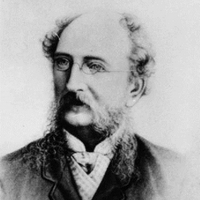
James Brunton Stephens (17 June 1835– 29 June 1902) was a Scottish-born Australian poet, author of Convict Once. Born at Borrowstounness, on the Firth of Forth, Scotland; the son of John Stephens, the parish schoolmaster, and his wife Jane, née Brunton. J. B. Stephens was educated at his father’s school, then at a free boarding school and at the University of Edinburgh from 1849 to 1854 without obtaining a degree. For three years he was a travelling tutor on the continent, and from 1859 became a school teacher in Scotland. While teaching at Greenock Academy, Stephens wrote some minor verse and two short novels ('Rutson Morley’ and 'Virtue Le Moyne’) which were published in Sharpe’s London Magazine in 1861-63.
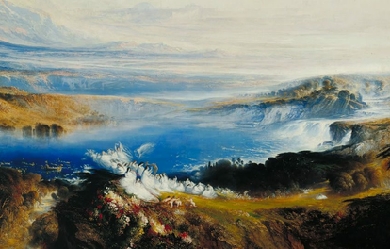
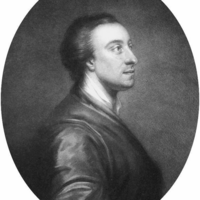
Mark Akenside (9 November 1721– 23 June 1770) was an English poet and physician. Biography Akenside was born at Newcastle upon Tyne, England, the son of a butcher. He was slightly lame all his life from a wound he received as a child from his father’s cleaver. All his relations were Dissenters, and, after attending the Royal Free Grammar School of Newcastle, and a dissenting academy in the town, he was sent in 1739 to the University of Edinburgh to study theology with a view to becoming a minister, his expenses being paid from a special fund set aside by the dissenting community for the education of their pastors. He had already contributed The Virtuoso, in imitation of Spenser’s style and stanza (1737) to the Gentleman’s Magazine, and in 1738 A British Philippic, occasioned by the Insults of the Spaniards, and the present Preparations for War (also published separately). After one winter as a theology student, Akenside changed to medicine as his field of study. He repaid the money that had been advanced for his theological studies, and became a deist. His politics, said Dr. Samuel Johnson, were characterized by an “impetuous eagerness to subvert and confound, with very little care what shall be established,” and he is caricatured in the republican doctor of Tobias Smollett’s The Adventures of Peregrine Pickle. He was elected a member of the Medical Society of Edinburgh in 1740. His ambitions already lay outside his profession, and his gifts as a speaker made him hope one day to enter Parliament. In 1740, he printed his Ode on the Winter Solstice in a small volume of poems. In 1741, he left Edinburgh for Newcastle and began to call himself surgeon, though it is doubtful whether he practised, and from the next year dates his lifelong friendship with Jeremiah Dyson (1722–1776). During a visit to Morpeth in 1738, Akenside had the idea for his didactic poem, The Pleasures of the Imagination, which was well received and later desecribed as 'of great beauty in its richness of description and language’, and was also subsequently translated into more than one foreign language. He had already acquired a considerable literary reputation when he came to London about the end of 1743 and offered the work to Robert Dodsley for £120. Dodsley thought the price exorbitant, and only accepted the terms after submitting the manuscript to Alexander Pope, who assured him that this was “no everyday writer”. The three books of this poem appeared in January 1744. His aim, Akenside tells us in the preface, was “not so much to give formal precepts, or enter into the way of direct argumentation, as, by exhibiting the most engaging prospects of nature, to enlarge and harmonize the imagination, and by that means insensibly dispose the minds of men to a similar taste and habit of thinking in religion, morals and civil life”. His powers fell short of this ambition; his imagination was not brilliant enough to surmount the difficulties inherent in a poem dealing so largely with abstractions; but the work was well received. Thomas Gray wrote to Thomas Warton that it was “above the middling”, but “often obscure and unintelligible and too much infected with the Hutchinson jargon”. William Warburton took offence at a note added by Akenside to the passage in the third book dealing with ridicule. Accordingly he attacked the author of the Pleasures of the Imagination—which was published anonymously—in a scathing preface to his Remarks on Several Occasional Reflections, in answer to Dr Middleton... (1744). This was answered, nominally by Dyson, in An Epistle to the Rev. Mr Warburton, in which Akenside probably had a hand. It was in the press when he left England in 1744 to secure a medical degree at Leiden. In little more than a month he had completed the necessary dissertation, De ortu et incremento foetus humani, and received his diploma. Returning to England Akenside unsuccessfully attempted to establish a practice in Northampton. In 1744, he published his Epistle to Curio, attacking William Pulteney (afterwards Earl of Bath) for having abandoned his liberal principles to become a supporter of the government, and in the next year he produced a small volume of Odes on Several Subjects, in the preface to which he lays claim to correctness and a careful study of the best models. His friend Dyson had meanwhile left the bar, and had become, by purchase, clerk to the House of Commons. Akenside had come to London and was trying to make a practice at Hampstead. Dyson took a house there, and did all he could to further his friend’s interest in the neighbourhood. But Akenside’s arrogance and pedantry frustrated these efforts, and Dyson then took a house for him in Bloomsbury Square, making him independent of his profession by an allowance stated to have been £300 a year, but probably greater, for it is asserted that this income enabled him to “keep a chariot”, and to live “incomparably well”. In 1746 he wrote his much-praised “Hymn to the Naiads”, and he also became a contributor to Dodsley’s Museum, or Literary and Historical Register. He was now twenty-five years old, and began to devote himself almost exclusively to his profession. He was elected a Fellow of the Royal Society in 1753. He was an acute and learned physician. He was admitted M.D. at the University of Cambridge in 1753, fellow of the Royal College of Physicians in 1754, and fourth censor in 1755. In June 1755 he read the Gulstonian lectures before the College, in September 1756 the Croonian Lectures, and in 1759 the Harveian Oration. In January 1759 he was appointed assistant physician, and two months later principal physician to Christ’s Hospital, but he was charged with harsh treatment of the poorer patients, and his unsympathetic character prevented the success to which his undeniable learning and ability entitled him. At the accession of George III both Dyson and Akenside changed their political opinions, and Akenside’s conversion to Tory principles was rewarded by the appointment of physician to the queen. Dyson became secretary to the treasury, lord of the treasury, and in 1774 privy councillor and cofferer to the household. Akenside died at his house in Burlington Street, where he had lived from 1762. His friendship with Dyson puts his character in the most amiable light. Writing to his friend so early as 1744, Akenside said that the intimacy had “the force of an additional conscience, of a new principle of religion”, and there seems to have been no break in their affection. He left all his effects and his literary remains to Dyson, who issued an edition of his poems in 1772. This included the revised version of the Pleasures of Imagination, on which the author was engaged at his death. Akenside’s verse was better when it was subjected to more severe metrical rules. His odes are rarely lyrical in the strict sense, but they are dignified and often musical. By 1911 his works were little read. Edmund Gosse described him as “a sort of frozen Keats”. Works * The best edition of Akenside’s Poetical Works is that prepared (1834) by Alexander Dyce for the Aldine Edition of the British Poets, and reprinted with small additions in subsequent issues of the series. See Dyce’s Life of Akenside prefixed to his edition, also Johnson’s Lives of the Poets, and the Life, Writings and Genius of Akenside (1832) by Charles Bucke. * The authoritative edition of Akenside’s Poetical Works is that prepared by Robin Dix (1996). An important earlier edition was prepared by Alexander Dyce (1834) for the Aldine Edition of the British Poets, and reprinted with small additions in subsequent issues of the series. See Dyce’s Life of Akenside prefixed to his edition, also Johnson’s Lives of the Poets, and the Life, Writings and Genius of Akenside (1832) by Charles Bucke. References and sources * References * Sources * This article incorporates text from a publication now in the public domain: Chisholm, Hugh, ed. (1911). “Akenside, Mark”. Encyclopædia Britannica (11th ed.). Cambridge University Press. Editnotes: External links * Works by Mark Akenside at Project Gutenberg * Works by or about Mark Akenside at Internet Archive * Works by Mark Akenside at LibriVox (public domain audiobooks) * Index entry for Mark Akenside at Poets’ Corner * Akenside’s The pleasures of imagination: a poem, in three books, New York, 1795. * Mark Akenside at University of Toronto Libraries References Wikipedia—https://en.wikipedia.org/wiki/Mark_Akenside
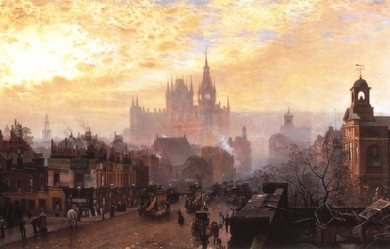
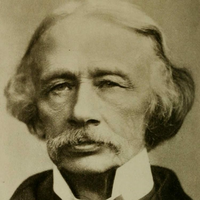
Coventry Kersey Dighton Patmore (23 July 1823– 26 November 1896) was an English poet and critic best known for The Angel in the House, his narrative poem about an ideal happy marriage. The eldest son of author Peter George Patmore, Coventry Patmore was born at Woodford in Essex and was privately educated. He was his father’s intimate and constant companion and inherited from him his early literary enthusiasm. It was Coventry’s ambition to become an artist. He showed much promise, earning the silver palette of the Society of Arts in 1838. In 1839 he was sent to school in France for six months, where he began to write poetry. On his return, his father planned to publish some of these youthful poems; Coventry however had become interested in science, and poetry was set aside.
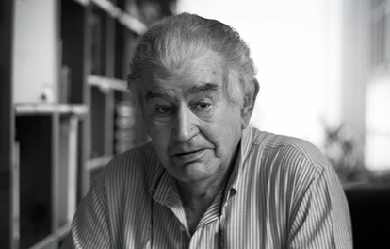
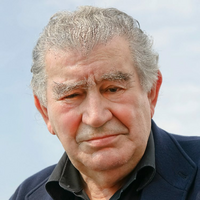
Antonio Gamoneda (Oviedo, 30 de mayo de 1931) es un poeta español, ganador del Premio Cervantes en 2006. Ha vivido desde los tres años en León, ciudad que ha influido notablemente en su trayectoria poética. Premio Nacional de Literatura en 1988 y Premio Quijote en 2009. Pertenece por edad al grupo poético de los años 50. Antonio Gamoneda nació en Oviedo el 30 de mayo de 1931. Su padre, de nombre Antonio, fue un poeta modernista que publicó un único libro, Otra más alta vida, en 1919. En 1934, ya huérfano de padre, se trasladó con su madre, Amelia Lobón a León. La presencia de su madre como refugio ante el horror y la miseria de la guerra y la postguerra es recurrente en toda su poesía. En 1936, con las escuelas cerradas, aprendió a leer gracias a la lectura del libro de su padre. El poeta vivió inicialmente en el principal barrio obrero, y ferroviario, de la ciudad: el Barrio El Crucero. Este lugar fue un observatorio privilegiado de la represión llevada a cabo por los nacionales durante la guerra civil y la inmediata posguerra dejando huella en la psicología y en la memoria del poeta. En 1941 comenzó a recibir instrucción gratuita en el colegio religioso de los Padres Agustinos hasta 1943, año en el que el poeta se auto expulsó. Al día siguiente de cumplir 14 años empezó a trabajar como meritorio y recadero en el hoy extinguido Banco Mercantil. Terminó por libre sus estudios medios y permaneció en la condición de empleado de banca durante veinticuatro años hasta 1969. Mientras trabajaba en el banco tomó contacto y fue parte de la resistencia intelectual al franquismo. Se dio a conocer poéticamente con Sublevación inmóvil (1953-1959), publicado en Madrid en 1960, obra con la que fue finalista del premio Adonais de poesía, y que supuso una ruptura con las tradicionales reglas realistas de la época. En 1969 pasó a crear y dirigir los servicios culturales de la Diputación Provincial de León y, a partir del 70, la colección Provincia de poesía, intentando promover una cultura progresista con el dinero de la dictadura. Fue privado de su condición de funcionario, y posteriormente recontratado, mediante sentencia judicial. Durante estos años comenzó a colaborar asiduamente en diferentes revistas culturales. A esta etapa pertenecen La tierra y los labios (1947-1953), no publicado hasta la aparición del volumen Edad, que recoge su poesía hasta 1987; Exentos I (1959-1960), poemas no aparecidos hasta Edad; Blues castellano (1961-1966), obra no publicada por motivos de censura hasta 1982 y Exentos II (Pasión de la mirada) (1963-1970), publicada con múltiples variaciones en 1979 con el título León de la mirada. A esta primera etapa siguió un silencio poético de siete u ocho años, significativamente marcados por la muerte del dictador Francisco Franco y los inicios de la llamada transición. Este tiempo, marcado por la crisis existencial e ideológica, se hace sentir en su siguiente obra Descripción de la mentira, León 1977, un largo poema que marcó un giro hacia una total madurez poética. Posteriormente publica Lápidas (Madrid, 1987) y Edad, el volumen que recoge toda su poesía hasta 1987, revisada por el autor, y que le valió el Premio Nacional de Literatura. En 1992 apareció Libro del frío, que le consagra como uno de los poetas más importantes en lengua castellana. En el año 2000 vio la luz la versión definitiva de esta obra, que incluía Frío de Límites, obra procedente de una colaboración con Antoni Tàpies pero que, desgajada de la pintura, adquiría el carácter de addenda necesaria de Libro del frío. Previamente habían aparecido los poemas de Mortal 1936, acompañando a unas serigrafías de Juan Barjola sobre la matanza en la plaza de toros de Badajoz durante la Guerra Civil, y no llegaron a publicarse Exentos III (1993-1997). De un diccionario relativo a la ciencia médica arcaica (1993-1998) y Libro de los venenos (Madrid, 1995) son obras más atípicas que parten de la convicción del autor de que el lenguaje arcaico se ha cargado estéticamente hasta convertirse en poesía y revelan la fascinación del poeta por la traducción de Dioscórides realizada por Andrés Laguna en el siglo XVI y su interpretación en clave poética por Gamoneda. Arden las pérdidas es publicado en 2003, libro que culmina la madurez iniciada en Descripción de la mentira, de una poesía en la perspectiva de la muerte en la que lo perdido (la infancia, el amor, los rostros del pasado, la ira…) aún arde en el tránsito hacia la vejez con mayor lucidez, con mayor claridad, con mayor frío. Tras él vendrán Cecilia (2004) y Esta luz: poesía reunida: (1947-2004), (2004). En 2006 año obtuvo el Premio Reina Sofía y el Premio Cervantes. Durante esta segunda etapa, entre 1979 hasta 1991, fue director gerente de la Fundación Sierra-Pambley, creada en 1887 por Francisco Giner de los Ríos bajo los principios de la Institución Libre de Enseñanza. Posteriormente fue miembro del Patronato hasta 2007. Se le ha concedido también la Medalla de Oro de la ciudad de Pau, la Medalla de Plata del Principado de Asturias, el Premio “Leteo”, la Medalla de Oro de la León y la Medalla de Oro del Círculo de Bellas Artes. Es Hijo Adoptivo de León y de Villafranca del Bierzo, y Doctor Honoris causa por la Universidad de León. El 20 de abril de 2008 introdujo un mensaje en la Caja de las Letras del Instituto Cervantes, cuyo contenido se sabrá en 2022. En marzo de 2009 se estrenó el documental Antonio Gamoneda. Escritura y alquimia, rodado en 2007, dirigida por Enrique Corti y César Rendueles, y con guion de Amalia Iglesias y Julia Piera. Crítica y recepción Antonio Gamoneda ha definido la poesía en uno de sus ensayos: "Es arte de la memoria en la perspectiva de la muerte". Su recepción crítica siempre ha sido favorable desde que el poeta comenzó a publicar: “Prieto y denso es el verbo de Antonio Gamoneda, como salido apenas del silencio para quedar con él, para volver a él ni bien se profiere, verbo como desprendido del erial, de la contemplación de un paisaje desolado, como nacido de la fría extensión para dejar su melancólica constancia del despojamiento…La poesía de Antonio Gamoneda tiene la desnudez de la existencia.” “Antonio Gamoneda se ha convertido en guía y modelo de los poetas más jóvenes, que valoran su sabiduría lingüística y su apertura hacia las tradiciones de la modernidad, apertura que nace de la asunción de la propia historia personal y colectiva.” “Antonio Gamoneda se encuentra con el expresionismo de Trakl, y sobre todo, con la última poesía de Lorca, cuya difícil herencia es sin duda hoy el único en atreverse a recoger.” “Voz probada e inmersa y sumergida, pues, en el paso mismo de los años, en la variabilidad alucinógena de la circunstancia histórica hispana, doblada en el acontecer espacioso de una “vida de poeta” seguida por Gamoneda; pero voz también que ocupa con autoridad su lugar en el vasto campo de unas letras españolas, y que en él toma sus posiciones, ejecutando la conquista de su espacio y figura más propia en una callada estrategia cuyo secreto es la demora, el silencio (y hasta un cierto exilio), y ello hasta verse en la actualidad respaldada por todas las instancias de legitimidad de que quepa hacer inventario […].” “Tres son los puntales, repetidos por el poeta insistentemente en [sus] escritos, sobre los que se alza la estatura de su pensamiento poético: - La naturaleza autorreferente de la palabra poética –intrarreferente, dice él también–, cuya significación y cuya realidad no atraviesan hacia una referencia exterior. - El desencadenante de naturaleza musical del lenguaje poético (‘El pensamiento poético es un pensamiento que canta’). - El hecho de que sólo sea posible que el lenguaje poético entre en la inteligibilidad bajo la condición de imágenes sensibles.” ” “Gamoneda no desarrolla propiamente un relato, ni siquiera cuando anuncia que va a hacerlo; los hechos se fragmentan en sensaciones, en detalles aislados de su contexto, transportan ecos de tiempos anteriores. La mirada está sometida a un núcleo obsesivo que la absorbe, la dirige de forma centrípeta hacia lo que el poeta llama interiorización. Sólo cuentan los sucesos interiorizados –escasos, hirientes– y éstos ofrecen su terca recurrencia, sus metamorfosis, su permanecer…Es una suerte peculiar de forma autobiográfica: no narrativa ni tampoco referencial de modo directo; pero sí tejida en la constancia de las imágenes y de los núcleos de interés, de los elementos que se tornan emblemáticos, de las figuras y personajes relevantes. Se trata de una dinámica minimalista y reiterativa…que se impone en la lectura conjunta de la obra.” Libros de poemas * Sublevación inmóvil. Madrid, Rialp, 1960 * Descripción de la mentira. 1ª ed. León, Diputación Provincial, col. Provincia, 1977. 2ª ed. Salamanca, Junta de Castilla y León, col. Barrio de Maravillas, 1986. 3ª ed. [con un texto de Julián Jiménez Heffernan] Madrid, Abada Editores, 2003. 4ª ed. [con un texto de Julián Jiménez Heffernan] Madrid, Abada Editores, 2003. * León de la mirada. 1ª ed. León, Espadaña, 1979. 2ª ed. León, Diputación Provincial, col. *Breviarios de la Calle del Pez, 1990. * Tauromaquia y destino. [con reproducciones de Juan Barjola] León, Retablo, 1980. * Blues castellano (1961–1966). 1ª ed. Gijón, Noega, 1982. 2ª ed. Barcelona, Plaza y Janés, 1999. 3ª ed. [con un texto de Elena Medel], Madrid, Bartleby, 2007. * Lápidas. Madrid, Trieste, 1986. 2º ed. Madrid, Abada, 2006 [con epílogo de Julián Jiménez Heffernan]. * Edad (Poesía 1947–1986). 1ª ed. Miguel Casado (ed. e intr.). Madrid, Cátedra, 1987 [reimp. 1988; 1988; 1989; 2000]. * Libro del frío. 1ª ed. Madrid, Siruela, 1992. 2ª ed. [con prólogo de Jacques Ancet] Valencia, Germanía, 2000 [ed. revisada y aumentada]. 3ª ed. Madrid, Siruela, 2003 [ed. revisada]. 4ª ed. Madrid, Siruela, 2006 [ed. revisada]. * Mortal 1936 (Pasión y luz de Juan Barjola). Mérida, Asamblea de Extremadura, 1994. * El vigilante de la nieve. Lanzarote, Fundación César Manrique, col. Péñola Blanca, 1995. * Libro de los venenos: corrupción y fábula del Libro Sexto de Pedacio Dioscórides y Andrés de Laguna, acerca de los venenos mortíferos y de las fieras que arrojan de sí ponzoña. 1ª ed. Madrid, Ediciones Siruela, 1995. 2ª ed. Madrid, Siruela, 1997. 3ª ed. Madrid, Siruela, 2006. * Arden las pérdidas. 1ª ed. Barcelona, Tusquets, 2003. 2ª ed. Barcelona, Tusquets, 2004. Premio de la Crítica de Castilla y León. * Cecilia. Lanzarote, Fundación César Manrique, col. Péñola Blanca, 2004. Reescritura. Madrid, Abada, 2004. * Esta luz. Poesía reunida (1947–2004). [Epílogo de Miguel Casado, “El curso de la edad”] Barcelona, Galaxia Gutenberg/Círculo de Lectores, 2004 [reimp. 2005; 2006] * Extravío en la luz, Madrid, Casariego, 2009, edición de seis poemas inéditos con grabados de Juan Carlos Mestre * Canción errónea, poemas escritos después de 2004; Tusquets, 2012. Esta obra fue finalista del Premio de la Crítica de Castilla y León en 2013. Antologías de su obra * Ésta luz (Antología 1947–1998). Edición de autor. Valladolid, Junta de Castilla y León, col. Barrio de Maravillas, 2000. * Antología. Santa Cruz de Tenerife, Caja General de Ahorros de Canarias, 2002. * Antología poética. Ángel Luis Prieto de Paula (ed. e intr.). León, Edilesa, 2002. * Descripción del frío. León, Celarayn, 2002. * Atravesando olvido (1947–2002). Antología personal. Edición de autor. [Prólogo de Eduardo Milán y conversación con Ildefonso Rodríguez] México, Editorial Aldus, 2004. * Lengua y herida. Antología. Vicente Muleiro (ed. y prólogo). Buenos Aires, Ediciones Colihue, 2004 * Sublevación inmóvil y otros poemas. Edición de autor. Valladolid, Junta de Castilla y León, 2006 [edición no venal]. * Antología poética. Tomás Sánchez Santiago (ed. e intr. “La armonía de las tormentas”). Madrid, Editorial Alianza, 2006 [reimpr. 2007]. * Ávida vena. Miguel Casado (ed. e intr.). León, Diario de León/Edilesa, 2006. * Sílabas negras. Amelia Gamoneda y Fernando R. de la Flor (ed. y estudio preliminar). XV *Premio Reina Sofía de Poesía Iberoamericana, Madrid - Salamanca, Patrimonio Nacional – Ediciones Universidad de Salamanca, 2006. * Cecilia y otros poemas. [Epílogo de Francisco Gómez-Porro “El cantor de las heridas”] Madrid, Fondo de Cultura Económica de España – Universidad de Alcalá. Servicio de Publicaciones, 2007. * Visión del frío. [Antología de textos manuscritos acompañados de obra gráfica. Catálogo de la Exposición “Premio Cervantes 2006”. Epílogo de Miguel Casado “Lugar de álamos”] *Alcalá de Henares, Servicio de Publicaciones de la Universidad de Alcalá, 2007. * Antología y voz. Incluye CD. [ ed. y prólogo de José Enrique Martínez] León, El búho viajero, 2007. Ensayo * “Poesía y conciencia. Notas para una revisión”, Ínsula, 204, Madrid, 1963. * El tema del agua en la poesía hispánica. León, Fray Bernardino de Sahagún, 1972. “Poesía, situación, utilidad“, República de las Letras, 23, Madrid, 1989, 27-29. * “Sobre la utilidad de la poesía provinciana”, República de las Letras, 24, Madrid, 1989, 165-167. * “El arte de la memoria”, El Urogallo 71, Madrid, 1992, 12-13 * “Aquella primera pasión de la lectura”, en Álvaro Ruiz de la Peña (ed.), Páginas de viva voz. Leer y escribir hoy. Oviedo, Universidad de Oviedo, 1995, 69-81. * “La poésie dans la perspective de la mort”, en Bernard Noël (ed.), Qu’est-ce que la poésie ? Paris, Éditions Jean-Michel Place/Ville de Saint-Denis, 1995, 228-230. * “Una lectura posesiva de Jorge Guillén”, en Francisco Javier Blasco (ed.), Jorge Guillén, el hombre y la obra. Valladolid, 1995, 293-296. * El cuerpo de los símbolos (Memoria, poética, ensayo). 1ª ed. Madrid, Huerga y Fierro, 1997[[.]] 2ª ed., México, Calamus, 2007. * “¿Existe o existió la Generación del Cincuenta?”, en AA. VV., II Congreso de Poesía canaria. * Hacia el próximo siglo. Gran Canaria, Caja Canarias, 1997, 29-32. * “La creación poética: radicación, espacios, límites”, en Ignacio Castro (ed.), Informes sobre el estado del lugar. Gijón, Caja de Asturias, 1998, 113-124. * “¿Poesía en los años 2000?”, La alegría de los naufragios, 1-2, Madrid, 1999, 25-28. * “Valente: de la contemplación de la muerte”, Cuadernos Hispanoamericanos, 600, Madrid, 2000, 7-10. * “Del sentir invisible de Marga Clark”, Quimera, 187, Madrid, 2000, 19-22. * Conocimiento, revelación, lenguajes. León, IES. “Lancia”, col. Cuadernos del noroeste, 2000. * “Hablo con Blanca Varela” [epílogo], en Blanca Varela, Obra reunida, Barcelona, Galaxia Gutenberg/Círculo de Lectores, 2001, 265-278. * “Memoria de Valente”, ABC/Cultural, Madrid 3/9/2001. * “Luis Cernuda: el poeta y el crítico”, en Nuria Martínez de Castilla y James Valender (eds.), 100 años de Luis Cernuda. Madrid, Publicaciones de la Residencia de Estudiantes, 2002, 223-231. * “Poesía y literatura: ¿límites?” en José Enrique Martínez Fernández (ed.), Estudios de literatura comparada: norte y sur, la sátira, transferencia y recepción de géneros y formas textuales. León, Universidad de León, 2002 * “Presencias de la poesía europea”, Moenia, Lugo, 2004 * “Poesía, existencia, muerte”, en Antonio Gamoneda (ed.), Atravesando olvido. Antología personal. México, Editorial Aldus, 2004, 207-221. Traducción al francés: “Poésie, existence, mort”, Europe París, 875, 2002, 94-104. * “Las lágrimas de Claudio”, Archipiélago, 63, Barcelona, 2004, 21-24 * “Prólogo”, en César Antonio Molina, El rumor del tiempo. Barcelona, Galaxia Gutenberg/Círculo de Lectores, 2006, 7-13. * “Quelques mots sur la poésie”, Europe, París, 928-929, 2006, 223-226. * Sur la poésie. Discours de réception du Prix Européen de Littérature 2006 suivi de Tombées (5 poèmes inédits). Jacques Ancet (trad.), Mesnil-sur-Estrée, Librairie La Hune/Arfuyen, 2006. * “Ángel González : un histórico”, La voz de Asturias, Oviedo, 3/2/2008. * Valente : texto y contexto, Santiago de Compostela, Servizo de Publicacións e Intercambio Científico Campus Universitario Sur, 2007. * “Pórtico”, en Nâzim Hikmet, Poemas finales. Ültimos poemas II 1962-1963. Madrid, *Ediciones del Oriente y del Mediterráneo, 2008. Relato y autobiografía * “La aventura física de María Ruiz”, en AA. VV., Cuentos. León, Caja de Ahorros, 1968. * “Relación de Don Sotero”, Los Cuadernos del Norte (Oviedo) 31, 1985, 74-76. Reproducido en Santos Alonso (ed.), Figuraciones. León, Diputación Provincial, 1986, 135-145. * Relación y fábula [“Relación de Don Sotero” y “Fábula de Pieter”]. Santander, EditoriaLímite, 1997. * Un armario lleno de sombra, Galaxia Gutenberg - Círculo de Lectores, Madrid, 2009. Libros en colaboración con artistas plásticos * “Lapidario incompleto”, en Antonio Gamoneda, Luis Mateo Díez, José Maria Merino, León: traza y memoria. [con grabados al aguafuerte de Félix Cárdenas] Madrid, Antonio Machón, 1984, 11-40. * Encuentro en el territorio del frío. [con reproducciones de Albert Agulló y prólogo de José Gómez Isla] León, Instituto Leonés de Cultura, 1995. * Eros y Thanatos. [pinturas de Álvaro Delgado con once poemas de Antonio Gamoneda] Madrid, Círculo de Bellas Artes, 1999. * ¿Tú? [con grabados de Antoni Tàpies] Madrid, Ed. T/ Antonio Machón, 1999. * Más allá de la sombra. [Bernardo Sanjurjo, Obra gráfica, 1999–2002. Antonio Gamoneda, Poemas, 2002] Oviedo, Museo de Bellas Artes de Asturias, 2002. * Memoria volcánica. [con grabados de Amaya Bozal] Madrid, Ediciones Sen, 2002. * Extravío en la luz [con grabados de Juan Carlos Mestre y preámbulos de Amelia Gamoneda] Madrid, Casariego, 2008. Traducciones de la obra de Antonio Gamoneda * Pierres gravées [Lápidas]. Jacques Ancet (trad. y prólogo), París, Lettres Vives, 1996. * Substances, limites. Nimphea. [con fotografías de Michel Hanique] Jacques Ancet (trad.), Toulouse, Le Grand Os, 1997. * Livro do frio. José Bento (trad. y nota biográfica), Lisboa, Assírio & Alvim, 1998. * Froid de limites. [¿Tú ?]. Jacques Ancet (trad.), París, Lettres Vives, 2000. * “Mortel 1936. Passion et lumière de Juan Barjola”. Jacques Ancet (trad.), Europe. Revue littéraire mensuelle (París) (2000). * “Beskrivning av lögnen” [Descripción de la mentira]. Ulf Eriksson (trad.), Artes (Stockholm) (2002). * Pétale blessé. [con una pintura original de Claire Pichaud] Claude Houy (trad.), Barriac en Rouergue, Trames, 2002. * Ardem as perdas. Jorge Melícias (trad.), Vila Nova de Famalicão, Quasi, 2004. * Blues castillan. Jacques Ancet (trad.), París, Corti, 2004. * De l´impossibilité. [con grabados de Jean-Louis Fauthoux y prefacio de Salah Stétié] Amelia Gamoneda (trad.), Montpellier, Fata Morgana, 2004. * Description du mensonge. Jacques Ancet (trad. e intr.), Paris, Corti, 2004. * Im ki kvar meuhar [Aunque ya es tarde. Antología]. Rami Saari (trad. e intr.), Jerusalén, Carmel, 2004. * Passion du regard. Jacques Ancet (trad. e intr.), París, Lettres Vives, 2004. * Boek van de kou [Libro del frío]. Bart Vonck (trad.), Leuven, Vlaams Fonds voor de Letteren, 2005. * Livre du froid. 1ª ed. Jean-Yves Bériou y Martine Joulia (trads.), París, Antoine Soriano *Éditeur, 1996. 2ª ed. [con prefacio de Pierre Peuchmaurd] París, Antoine Soriano Éditeur, 2005. * Cecilia. Jacques Ancet (trad.), París, Lettres Vives, 2006. * Clarté sans repos [Arden las pérdidas]. Jacques Ancet (trad. e intr.), París, Arfuyen, 2006. * Kitab al-bard [Libro del frío]. Almahdi Akhrif (trad. e intr.), Casablanca, Publicaciones del Ministerio de la Cultura, s. d. * Esta luz. Dieses Licht. Eine Anhologie 1947-2005. Manfred Bös, Petre Strien-Bourmer, Karina Gómez-Montero (trads.) [epílogo de Javier Gómez-Montero] Kiel, Ludwig, 2007. * Descriçao da mentira. Vasco Gato (trad.), Vila Nova de Famalicão, Quasi, 2007. * Förlusterna Glöder. Trad. Ulf Eriksson., Bokförlaget Tranan, Estocolmo, 2007. * Gravestones. [Lápidas]. Trad. Donald Wellman, University of New Orleans Press, New Orleans, 2009. Audiolibros * Dos poetas en su voz. Manuel Álvarez Ortega y Antonio Gamoneda. Valladolid, Ediciones Portuguesas, 1992. * La voz de Antonio Gamoneda. Incluye CD. Madrid, Publicaciones de la Residencia de Estudiantes, 2004. * Reescritura. Incluye CD. Madrid, Abada, 2004. * Antología y voz. Incluye CD. [ ed. y prólogo de José Enrique Martínez] León, El búho viajero, 2007. Otros trabajos de Antonio Gamoneda * Francisco Echauz. La dimensión ideológica de la forma. Madrid, Editorial Rayuela, 1978. * José Luis Sánchez. Humanismo y volumen. Madrid, Dirección General de Bellas Artes, 1981. * Silverio Rivas. Viaje al interior de la escultura. La Coruña, Atlántico, 1981. * Antonio Gamoneda, Otra más alta vida (1919). Gijón, Universos, 1993. Monográficos sobre Antonio Gamoneda * Un ángel más (Valladolid) 2 (1987) * Filandón/Diario de León (León) 10/7/1988 * Noire et Blanche (Le Havre) (1995) * Collection de l´Umbo (París) 4 (1999) * “Con Antonio Gamoneda”, Zurgai (Bilbao) (2001) * La alegría de los naufragios (Madrid) 7-8 (2003) * “Antonio Gamoneda”, en Espacio/Espaço escrito (Badajoz) 23-24 (2004) * “Antonio Gamoneda”, en Quimera, Marta Agudo y Jordi Doce (eds.), (Madrid) 275 (2006) * Filandón/Diario de León (León) 22/4/2007 * República de las Letras (Madrid) 104 (2007) * Minerva (Madrid) 04 (2007) * Ínsula (Madrid) 736 (2008) Críticas y reseñas sobre Antonio Gamoneda * AA. VV. Rencontres avec Antonio Gamoneda. Pau, Atelier Poésie Léo Lagrange, 2000 * ALONSO, María Nieves, Partes iguales de vértigo y olvido. La poesía de Antonio Gamoneda. Madrid, Calambur, 2005. * ALONSO, Santos, “Edad, de Antonio Gamoneda: la voz de la memoria y las voces de la colectividad”, Ínsula (Madrid) (1990) * ÁLVAREZ MÉNDEZ, Natalia, “Fusión de la dimensión espacial y humana en León de la mirada”, Estudios Humanísticos (Madrid) (2000) * ALVAREZ-UDE, Carlos, “Un canto a tres voces”, Letra Internacional (Madrid) (1996) * AZANCOT, Leopoldo, “De una nueva épica”, Historia Libertaria (Madrid) (1979) * BALCELLS, José María, “Libro de los venenos o la voz múltiple de Antonio Gamoneda”, en De Jorge Guillén a Antonio Gamoneda, León, Secretariado de Publicaciones de la Universidad de León, 1998 * BREYSSE-CHANET, Laurence, “Hacia la ‘aurora del contorno’. Una lectura de Cecilia de *Antonio Gamoneda”, Estudios Humanísticos (León) (2008) * CALVO VIDAL, José Luis, “Antonio Gamoneda poeta de la marginalidad”, Evohé (Lugo) (1997) * CANDAU, Antonio, “Antonio Gamoneda: la conciencia y las formas de la ironía”, Hispanic Review (Philadelphia), (1994) * CANDAU, Antonio. “Para una lectura del Libro del frío”, Letras peninsulares (Davidson) (1996-1997) * CARNET, Nelly, “Antonio Gamoneda: Clarté sans repos”, Europe (París) (2006) * CASADO, Miguel, “Descripción de la mentira, de Antonio Gamoneda. La perplejidad es la conciencia”, en Esto era y no era. Lectura de poetas de Castilla y León. Valladolid, Ámbito, 1985 * CASADO, Miguel, “El interior de la edad”, Los Cuadernos del Norte (Oviedo) (1986-1987) * CASADO, Miguel, “Sobre Lápidas”, Los Cuadernos del Norte (Oviedo) (1987). * CASADO, Miguel, “Aún”, Cambio 16 (Madrid) 1993. * CASADO, Miguel, “Antonio Gamoneda”, en De los ojos ajenos. Lecturas de Castilla, León y Portugal. Salamanca, Junta de Castilla y León, 1999 * CASADO, Miguel, “Abstracción y realidad en Antonio Gamoneda”, La factoría valenciana (Valencia) (1997) * CASADO, Miguel, “¿Placer sin esperanza?”, Revista de Libros (Madrid) (2000) * CASADO, Miguel, “Dispersión y poder de lo narrativo” en Del caminar sobre el hielo, Madrid, Antonio Machado Libros, 2001 * CASADO, Miguel, “Abstracción y realidad” en La poesía como pensamiento, Madrid, Huerga & Fierro, 2003 * CASADO, Miguel, “Cualidad de la huella”, en Archivos (lecturas, 1988-2003), Burgos, Dossoles, 2004 * CASADO, Miguel, “Seis poetas de las periferias (Antonio Gamoneda, poeta de la realidad)”, en Los artículos de la polémica y otros textos sobre poesía. Madrid, Biblioteca Nueva, 2005, * CASADO, Miguel, “El curso de la edad”, Abada, Madrid, 2009. * COLINAS, Antonio, “Lápidas, de Antonio Gamoneda: un humanismo para el fin de siglo”, Ínsula (Madrid) (1987) * DIEGO, José Manuel, “Antonio Gamoneda, el valor de la marginalidad”, Ínsula (Madrid) (1992) * DIEGO, José Manuel, “Libro del frío una mirada caleidoscópica”, Diálogo de la Lengua (Cuenca) (1993) * DÍEZ, Luis Alfonso, “Antonio Gamoneda. Una poesía de la fugacidad (A propósito de El libro del frío)”, Paideia (Madrid) (2003) * DOMÉNECH, Ricardo, “Poesía. Sublevación inmóvil de Antonio Gamoneda”, Ínsula (Madrid) (1961) * DONCEL, Diego et alt., Antonio Gamoneda. Madrid, Calambur, 1993 ESCAPA, Ernesto, “Crónica de un estrago moral”, Informaciones de las Artes y las Letras, 5/10/1978 * ESPINASA, José María, “Cinco decenios adentrándose afuera”, Letras libres, (Madrid) Año 6 (junio de 2001) * EXPÓSITO HERNÁNDEZ, José Antonio, La obra poética de Antonio Gamoneda. Tesis Doctoral. Universidad Complutense de Madrid (2003) http://www.ucm.es/BUCM/tesis/fll/ucm-t26672.pdf * FERNÁNDEZ-JÁUREGUI ROJAS, Carlota, “Apuntes para una poética del índice en César Vallejo y Antonio Gamoneda” en Despalabro. Ensayos de Humanidades (Madrid) (2007) * GARCIA JURADO, Francisco, “Antiguos textos de ciencia convertidos en Poesía: Dioscórides y Andrés Laguna en el Libro de los venenos de Antonio Gamoneda”, Epos d(Madrid) XIII (1997) * GASPAR, Sergio, “Antonio Gamoneda: leer el frío”, Hora de poesía (Barcelona) (1993) *GÓMEZ TORÉ, José Luis: “Antonio Gamoneda: palabra corporal, poesía del cuerpo”, Cuadernos del minotauro (Madrid) (2005) * GRACIA ARMENDÁRIZ, Juan, “Postnovísmos y generación del 50: José Angel Valente y Antonio Gamoneda”, Actas del Congreso Jaime Gil de Biedma y su generación poética. Zaragoza, Diputación, 1996, II, 575-582 http://www.ucm.es/eprints/4645 * GUTIÉRREZ, Goya, "El encubrimiento que crea una verdad", Cuadernos El Matemático (Madrid), (2007) * HUERGA, Carlos, “Antonio Gamoneda: arden las pérdidas” http://www.deriva.org * IGLESIAS SERNA, Amalia, “Antonio Gamoneda, el escultor de las palabras” en Letras libres (Madrid) (2006) * JANÉS, Clara, “Di vertigine e oblio” en Poesia (Milán) (2007) * LANZ, Juan José, “Antonio Gamoneda y la poética de la desocupación” en Ínsula (Madrid) (2007) * LÓPEZ CASTRO, Armando, “Antonio Gamoneda: la poesía de la memoria”, en Voces y memoria. Poetas leoneses del siglo XX. Salamanca, Junta de Castilla y León, * LLERA, José Antonio, “La memoria y la muerte en la poesía de Antonio Gamoneda: una lectura de Descripción de la mentira” en Laurel (Cáceres) (2002) * MACHÍN LUCAS, Jorge, “La poética de Antonio Gamoneda: el referente esotérico” en Lectura y signo (León) (2009) * MACHÍN LUCAS, Jorge, “La mentira como vía de conocimiento en la poesía de Antonio Gamoneda” en La Nueva Literatura Hispánica (Valladolid) (2012) * MARIGÓMEZ, Luis, “Antonio Gamoneda, Descripción de la mentira” en Un ángel más (Valladolid) (1987) * MARTÍNEZ, Santiago, “Antonio Gamoneda”, Lateral (Madrid) (2001) * MARTÍNEZ FERNÁNDEZ, José Enrique, “Prometeo frente a Orfeo: poética de la renuncia frente a poética de la plenitud”, Revista de teoría de la Literatura y Literatura Comparada (Zaragoza) (1998) * MARTINEZ GARCÍA, Francisco, Gamoneda, una poética temporalizada en el espacio leonés. León, Servicio de Publicaciones de la Universidad de León, 1991 * MERINO, Margarita, Ambigüedad y certidumbre en las “edades” poéticas de Antonio Gamoneda. [Con una entrevista al poeta] Tesis Doctoral. Florida State University, 1999. * MIRANDA, Jorge, “Música da morte”, A Phala (Lisboa) (1999) * MIRÓ, Emilio, “Una colección y dos poetas: José Antonio Gabriel y Galán y Antonio Gamoneda”, Ínsula, (1978) * MOGA, Eduardo, “Una antología luminosa”, Lateral (Barcelona) (2000) * MOLINA, César Antonio, “Dos visiones épicas de lo contemporáneo”, Camp de l´Arpa (Barcelona) (1981) * MONTAGUT, María Cinta, “Libro de los venenos”, Quimera (Barcelona) (1995) * NAJT, Myriam, “Descripción de la mentira”, Cuadernos Hispanoamericanos (Madrid) (1978) * ORTEGA, Antonio, “El uso y la sustancia del olvido”, El crítico (Madrid) Segunda Época, junio de 2003 * ORTEGA, Esperanza, “La música de la oscuridad. Antonio Gamoneda”, Campo de Agramante (Jerez de la Frontera) (2005) * PALOMO GARCÍA, Carmen, Antonio Gamoneda: Poéticas radicales, Tesis Doctoral, Universidad de León, 2006. * PALLARÉS, María del Carmen, “Libro del frío. Contemplar la muerte”, Reseña de Literatura, Arte y Espectáculos, (Madrid) (1993) * PEREZ LAS HERAS, Antonio, “De la juventud del dolor a la frialdad de la existencia: la poética unitaria de Antonio Gamoneda”, en Actas del Congreso Jaime Gil de Biedma y su generación poética, Zaragoza, Diputación General de Aragón, 1996 * PICARDO, Osvaldo: “El abrazo de Orfeo” La pecera (Mar del Plata) (2001) * REIJA MELCHOR, Francisco Javier, “Expansión do blues. Temas e tons na poesía de Antonio Gamoneda”, Unión Libre (Lugo) (2000) * RODRÍGUEZ, Ildefonso, “La libertad blanca de Antonio Gamoneda”, Delibros, 58, julio-agosto de 1993. Reeditado en El crítico (Madrid) Segunda Época, 5, s. p. * RODRÍGUEZ, Ildefonso, “Azogue, sangre, leche alacrán: el libro de lo incierto”, Espacio / Espaço escrito (Badajoz) (1996) * RODRÍGUEZ, Ildefonso, “La presión sobre los límites. Dos cuentos de Antonio Gamoneda”, La Ortiga (Santander) (1997) * SÁNCHEZ SANTIAGO, Tomás, “Severidad sonámbula (lo que sigo pensando sobre Descripción de la mentira, de Antonio Gamoneda)”, Solaria (Oviedo) Segunda Época, (2004) * SANZ VILLANUEVA, Santos (coord.), Historia y crítica de la literatura española. Barcelona, Crítica, 1999 * SERRANO, Pedro: “Gamoneda: la escasez y la necesidad”, Letras libres (Madrid) (2001) * SOLANO, Francisco, “La luz del silencio”, El Urogallo (Madrid) (1993) * SOREL, Andrés: Iluminaciones. Antonio Gamoneda, Sevilla, RD Editores, 2008. * SUÑEN, Juan Carlos, “Huellas sobre la nieve”, El Crítico (Madrid) (1992) * SUÑEN, Juan Carlos, “El placer de la significación”, El Urogallo (Madrid), (1995) * SUÑEN, Juan Carlos, “Modernidad practicable: filología y re-significación”, Ínsula (Madrid) (1996) * VALVERDE, Álvaro, “La poesía de Antonio Gamoneda (una lectura), Cuadernos Hispanoamericanos (Madrid) (1993) * SUÑEN, Juan Carlos, “La geografía del final”, Ínsula (Madrid) (1993) * VILAS, Manuel, “Arden banderas entre laureles. La Edad de Antonio Gamoneda”, Cuadernos del Norte (Oviedo) 49 (1988), 55-57 * VILLENA, Luis Antonio, “Acercamiento a Gamoneda”, El Urogallo (Madrid) (1987) Entrevista * ANÓNIMO, “Contemplar la muerte”, El Urogallo (Madrid) (1987). * ANÓNIMO, “Ser o no ser del 50”, El Urogallo (Madrid) (1990) . * ANÓNIMO, “El silencio imperfecto”, Común Presencia (Bogotá) (2005). * ANÓNIMO, “A palavra órfica”, Cult (São Paulo) (IV) s. d. * ARNANUY, Jordi, “Sigo practicando la soledad”, Lateral (Barcelona) (2005). * BENTO, José, “Livro do frio”, A Phala (Lisboa) (1999). * CALVO VIDAL, José Luis, “Entrevista”, Moenia (Lugo) (1996). * CASADO, Miguel, “Sobre la ‘especie formal’ de la poesía”, en De los ojos ajenos. Lecturas de Castilla, León y Portugal. Valladolid, Junta de Castilla y León, 1999. * CASADO, Miguel, “Tengo miedo de mi obra reunida”, La Vanguardia (Barcelona) 4/5/2005. * COLINAS, Antonio, “Antonio Gamoneda, el Premio Cervantes, conversa con Antonio Colinas”, El Mundo/ El Cultural (Madrid) 19/4/2007. * FERNÁNDEZ REBOIRAS, Ramón, “Terra venduta”, Lettera Internazionale, (Roma) (1988) s. p. * IGLESIAS, Amalia, “Antonio Gamoneda. El triunfo de la justicia poética”, Minerva (Madrid) IV época, (2007). * LÓPEZ BARRIOS, Francisco, “Antonio Gamoneda”, El Independiente (Madrid) 20/12/1990 * LÓPEZ DE ABIADA, José Manuel, “Entrevista a Antonio Gamoneda”, http://www.anmal.uma.es/numero15/Gamoneda.htm * LLORENTE, Manuel, “Entrevista con Antonio Gamoneda”,El Mundo (Madrid) 7/11/1992 * MARQUEZ CRISTO, Gonzalo, “Antonio Gamoneda: Los trabajos de la luz" * MARTINEZ, Santiago, “Antonio Gamoneda. * MARTINEZ, Santiago, “Antonio Gamoneda. La poesía sirve para nombrar lo desconocido”, Lateral (Barcelona) (2001). * MARTINEZ GARCÍA, Francisco, “El poeta Antonio Gamoneda me habla del tiempo”, en Gamoneda una poética temporalizada en el espacio leonés. León, Universidad, 1991, 25-50. * MOLINA, César Antonio, “Antonio Gamoneda: Escribir es una tarea alquímica”, Diario 16/Culturas, 1988. * MORA, Miguel; RUIZ, Jesús, “Entrevista a Antonio Gamoneda” http://web.archive.org/web/http://www.elpelao.com/letras * OUTEIRIÑO, Manuel, “Entrevista”, Diario de Galicia (Vigo) 1988. * PALOMO GARCÍA, Carmen (ed.) El lugar de la reunión. Conversaciones con Antonio Gamoneda, Burgos, Editorial Dossoles, 2006. * PIEDRA, Antonio, “Miedo a escribir”, El Norte de Castilla (Valladolid) 12/12/1992. * PRADO, Benjamín “El año Gamoneda”, Leer (Madrid) 11 (1988) 90-91. * RODRIGUEZ Ildefonso, “Entrevista con Antonio Gamoneda”, El Paseante (Madrid) 23-25 (1995) s. p. * RODRIGUEZ Ildefonso, “Una conversación con Antonio Gamoneda”, en Antonio Gamoneda. Atravesando olvido (1947–2002) Antología personal. México, Editorial Aldus, 2004. * RODRÍGUEZ MARCOS, Javier, “La poesía se escribe desde la perspectiva de la muerte”, El País/Babelia, 23/08/2003. * TARACIDO, Marcos; COLOM, Roger, “Una conversación con Antonio Gamoneda”, http://librodenotas.com/almacén. * SUÑÉN, Juan Carlos, “Entrevista a Antonio Gamoneda”, Hablar/Falar de Poesía (Lisboa – Badajoz) (1997) . * VILLAR, Arturo, “Entrevista”, La Estafeta Literaria (Madrid) (1974). * YUBERO, Diana y MACHO, Isaac, “Entrevista con Antonio Gamoneda”, El Norte de Castilla (Valladolid) 10/12/1986. Premios * Premio Cervantes (2006) * Premio Reina Sofía de Poesía Iberoamericana (2006) * Premio Nacional de Poesía, Gamoneda (1988) * Premio Castilla y León de las Letras (1985) Predecesor: * Sergio Pitol Medal of the Miguel de Cervantes Prize.svg * Premio Miguel de Cervantes 2006 Sucesor: * Juan Gelman Predecesor: * Luciano G. Egido Escudo heráldico de Castilla y León.svg * Premio de la Crítica de Castilla y León 2004 Sucesor: * Raúl Guerra Garrido Referencias Wikipedia-http://es.wikipedia.org/wiki/Antonio_Gamoneda
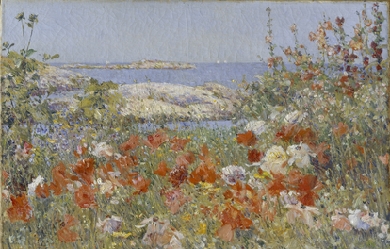
CANTA O DONNA Canta o donna la tua pagina di suoni racchiusi nelle conchiglie del tuo mare immenso. Sei nata da una costola ma sei sostegno di vita, nessuna come te sa lottare per amore. Non dimenticare la Verità che ti soffiò il Creatore nella natura dei tuoi petali come rosa mattutina. Non dimenticare la grazia femminile che culla la tua anima, in cui ti stendi quando cerchi le braccia della fragranza che ti vela. Non solchi mai il tuo volto di Luna nessuna lacrima di pianto, perché nelle mani hai una dose di pazienza con cui tessere lo scialle per proteggere il tuo mondo... BIOGRAFIA Rosita Matera nasce a Cerignola, in provincia di Foggia. La Puglia, regione che le ha dato i natali, ha influenzato non poco la sua formazione attraverso la schietta solarità della natura e le tradizioni legate a gesti semplici ma ricchi di significato. Da anni si dedica alla scrittura, pittura e fotografia d’autore. Ha studiato presso il Liceo classico “Nicola Zingarelli” di Cerignola. Insegnante di Informatica, ha frequentato l’ Università “Carlo Bo” di Urbino, completando il corso di studi sulla figura e le opere di Raffaello Sanzio e sul Rinascimento Italiano. Presso l’Università Federico II di Napoli ha conseguito l’Attestato di “Laboratorio di restauro” e “Disegno dello spazio scenico”. Presso l’Università Cattolica di Milano ha frequentato la Scuola Estiva Internazionale di Studi Danteschi. Iscritta a varie associazioni artistiche e culturali e gruppi di scrittura creativa, ha ottenuto lusinghieri riconoscimenti. Nel 2020 vince il Concorso letterario internazionale “Pubblica il tuo libro” per la Casa Editrice “Il Filo di Arianna”. Nel 2021 vince il Concorso nazionale “Dante il Sommo” per il comune di Termoli e nel 2022 il Concorso letterario “Una Corte di Libri”, sezione poesia. Ha pubblicato nell’aprile 2021 la raccolta poetica "Lassù c’è un cuore indecifrabile" per il Filo di Arianna Editore e nel 2023"Giallo è il verso del mattino"- Ivvi Editore. Dal 2018 gestisce il blog letterario “I Colori della Vita” (Tutti i diritti sono riservati L.633/41 )


